Likes
- Class leading build quality and reliability.
- Arguably the best support network of its rivals.
- Affordable maintenance and parts costs.
- The V6 is a gem, the V8 is truly special.

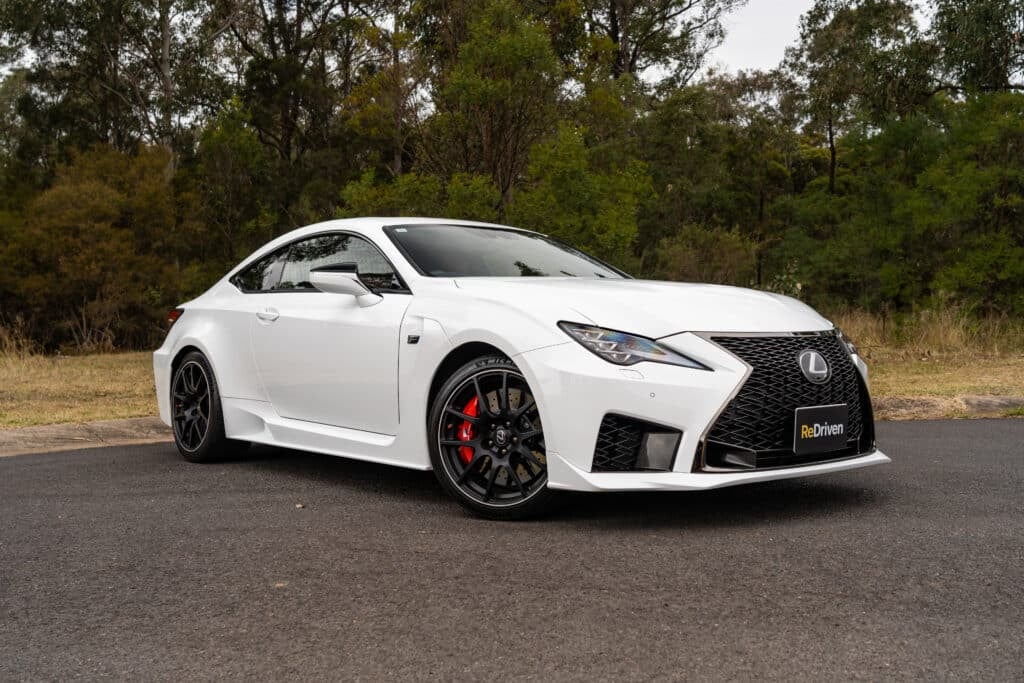
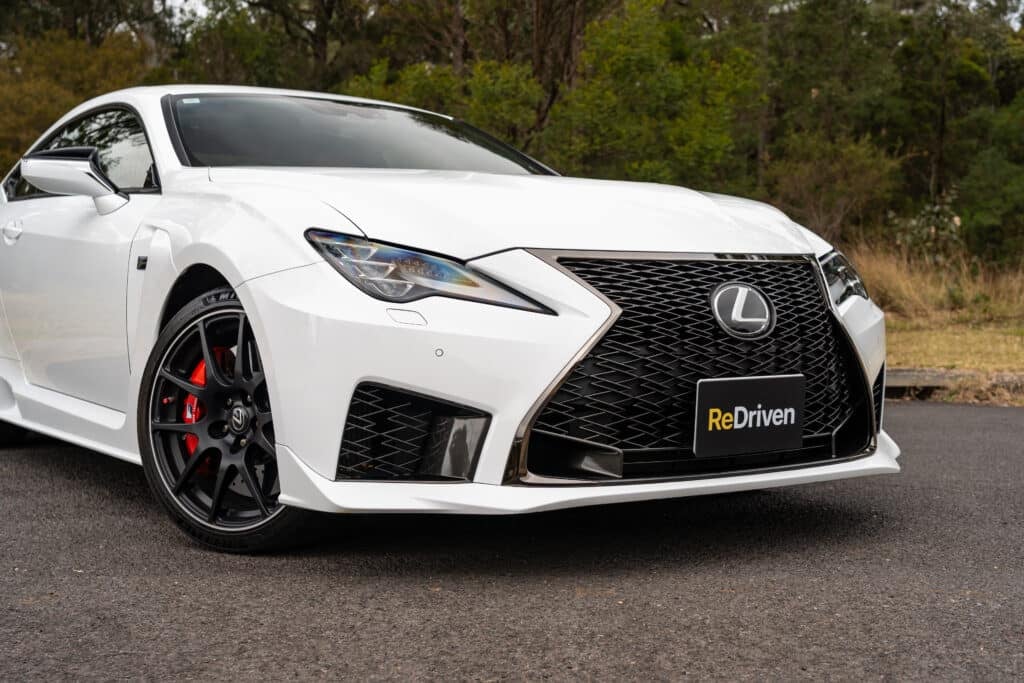
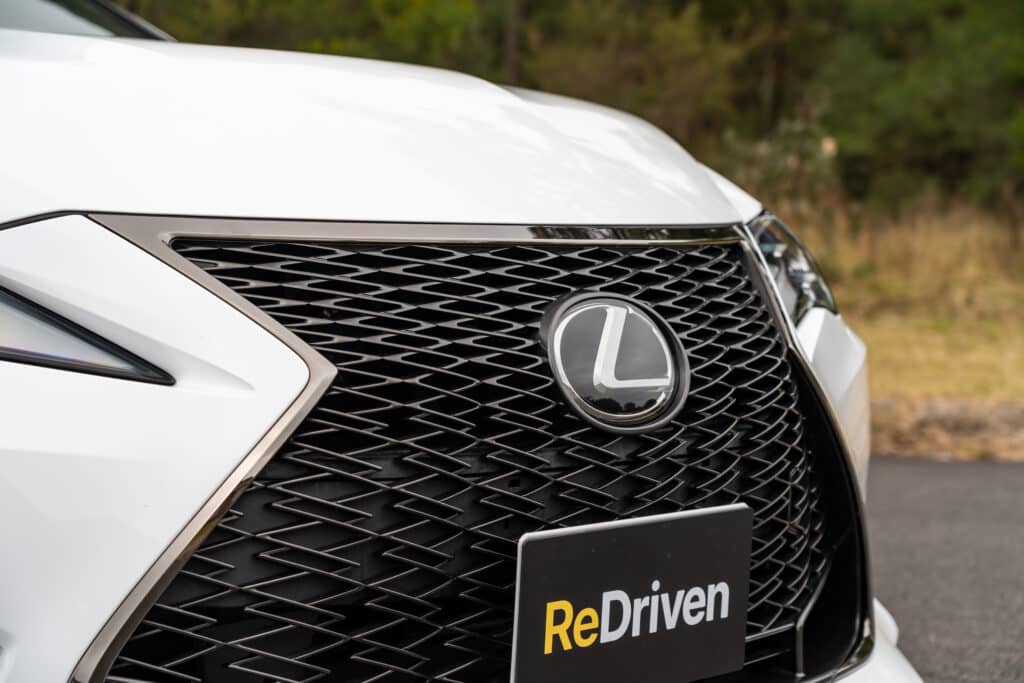
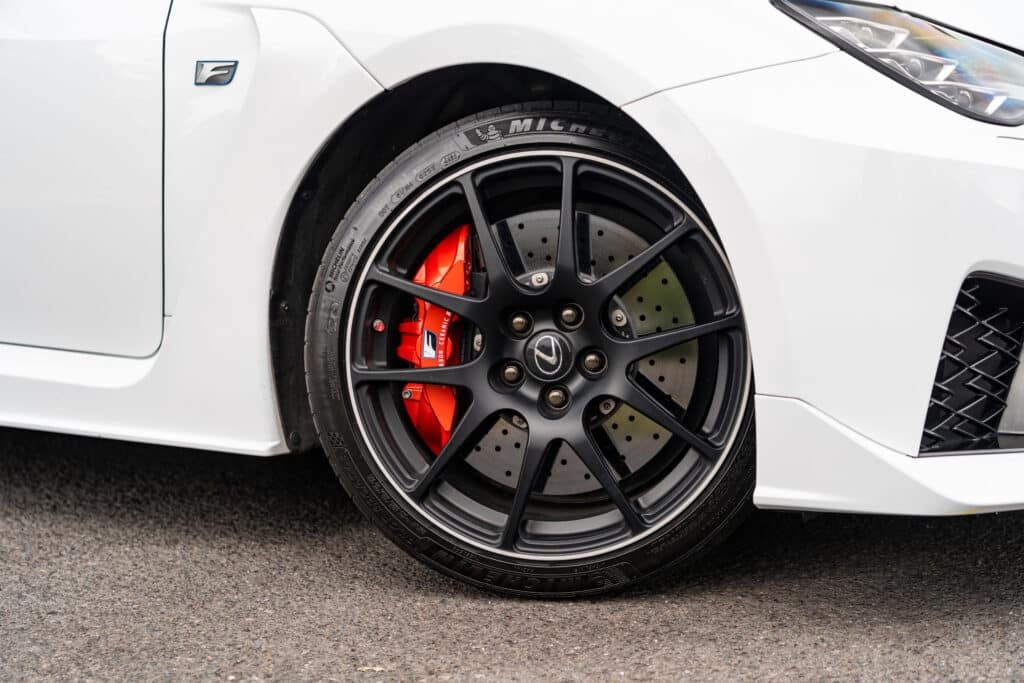

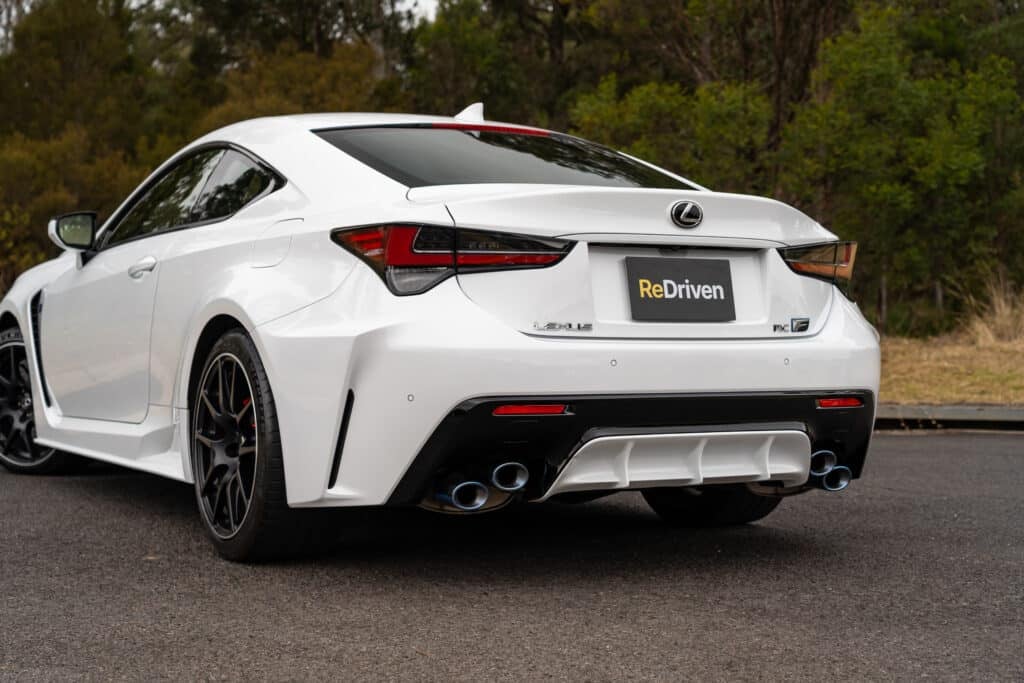
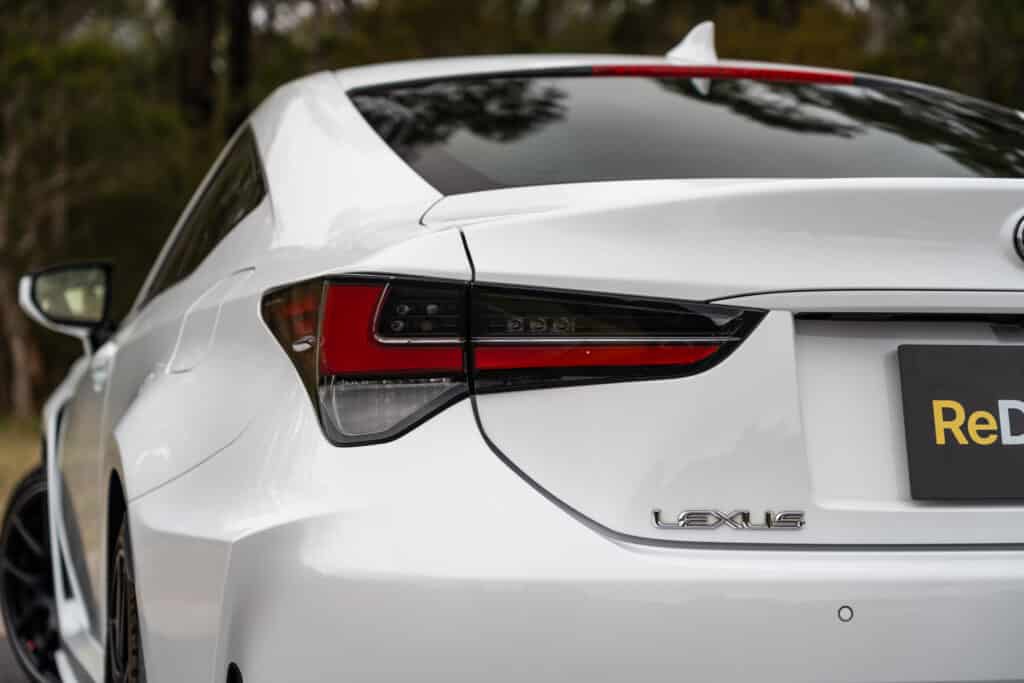
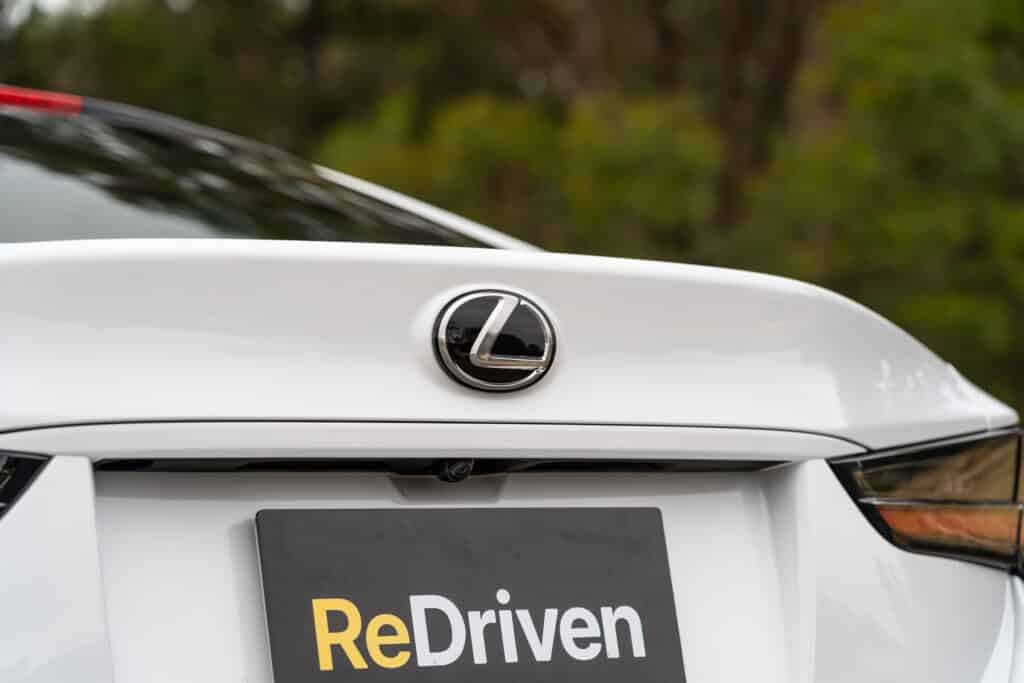
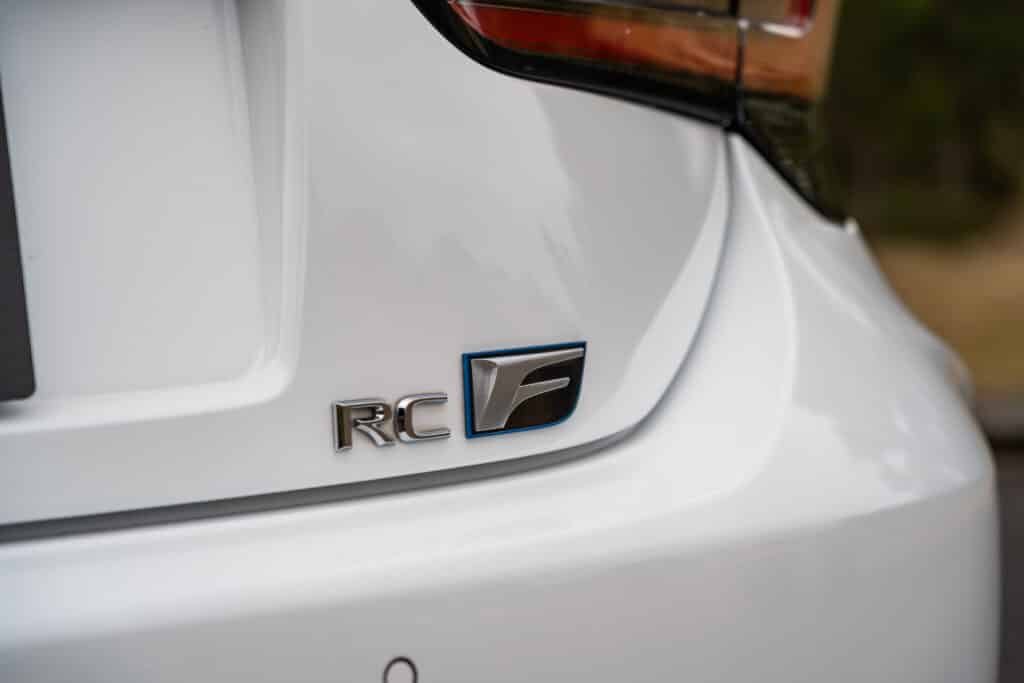

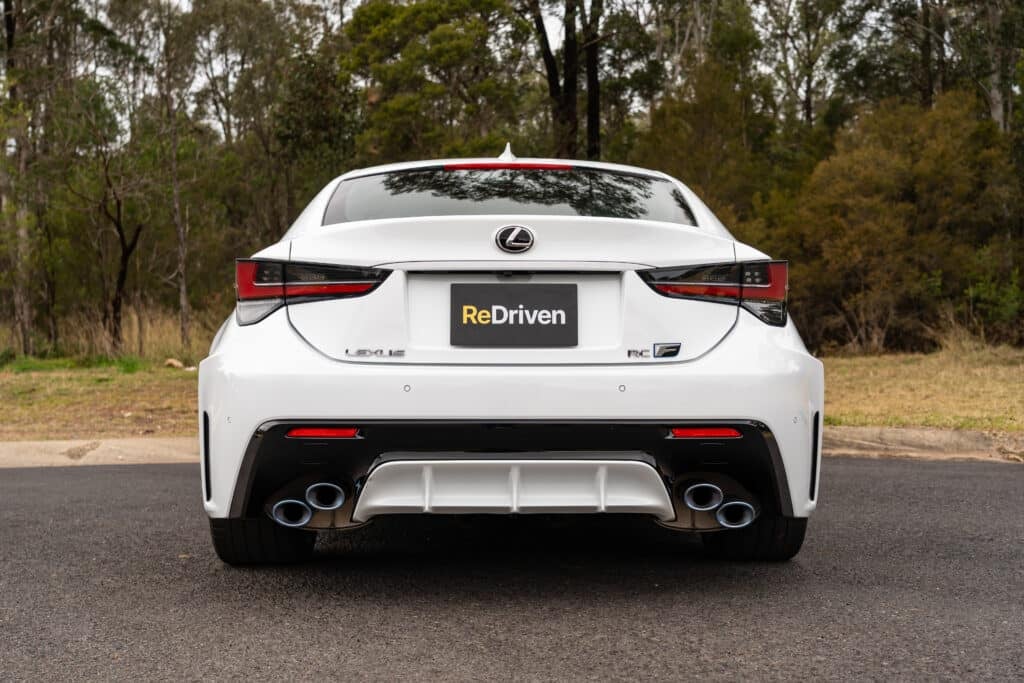
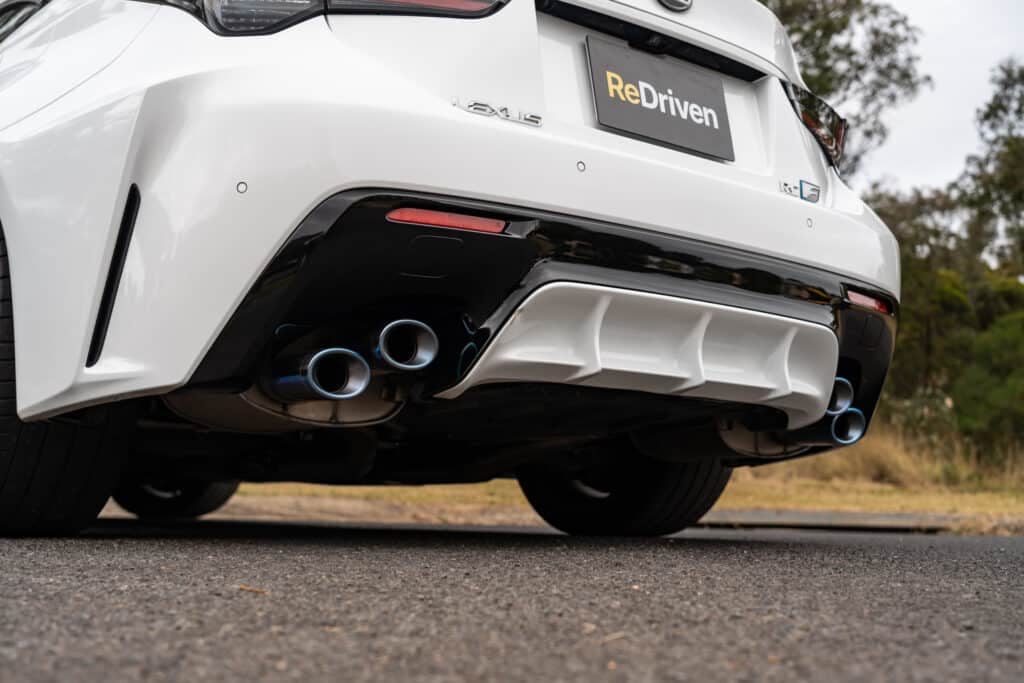
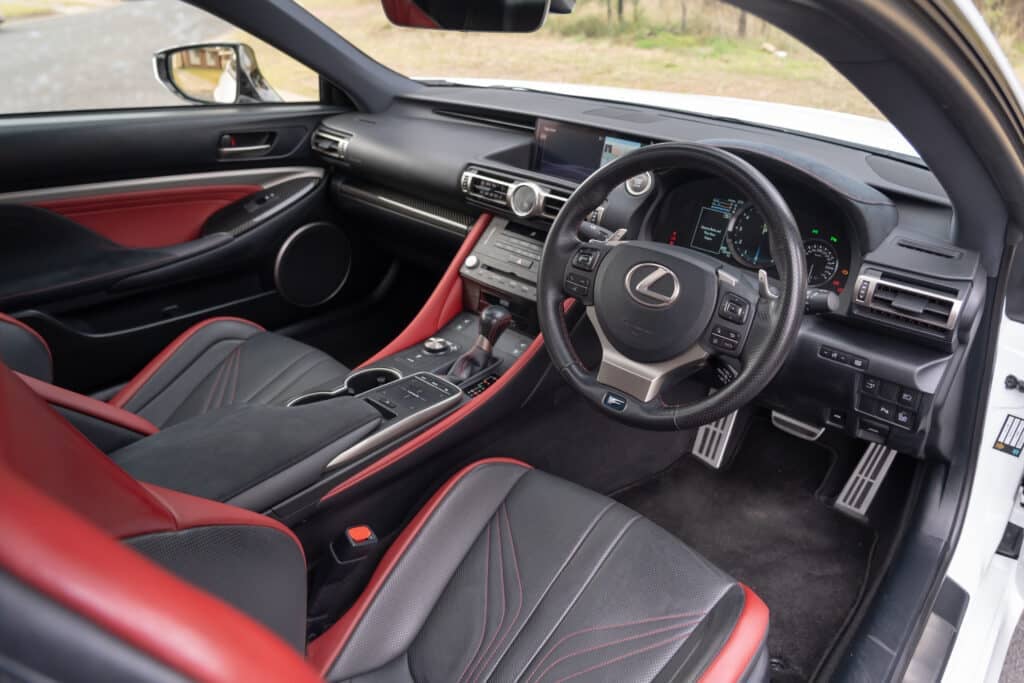


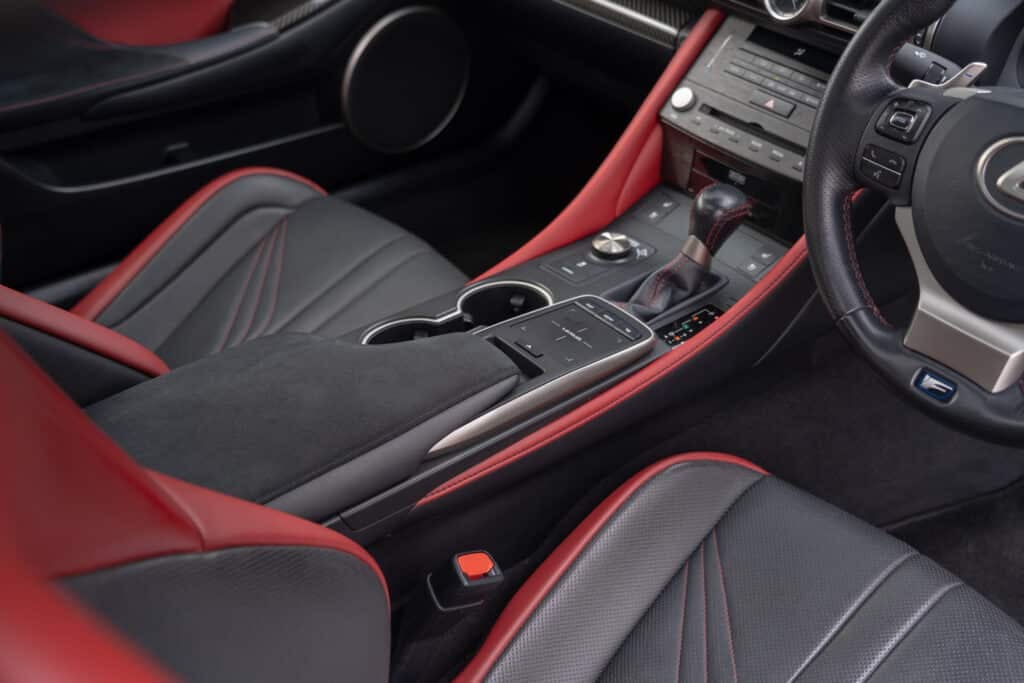
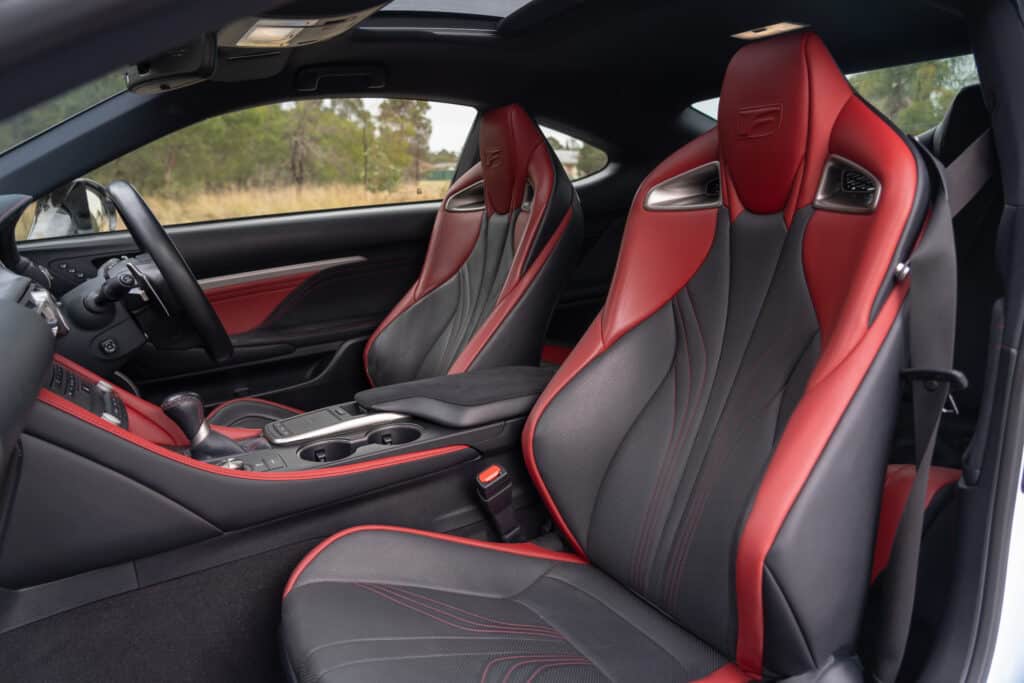
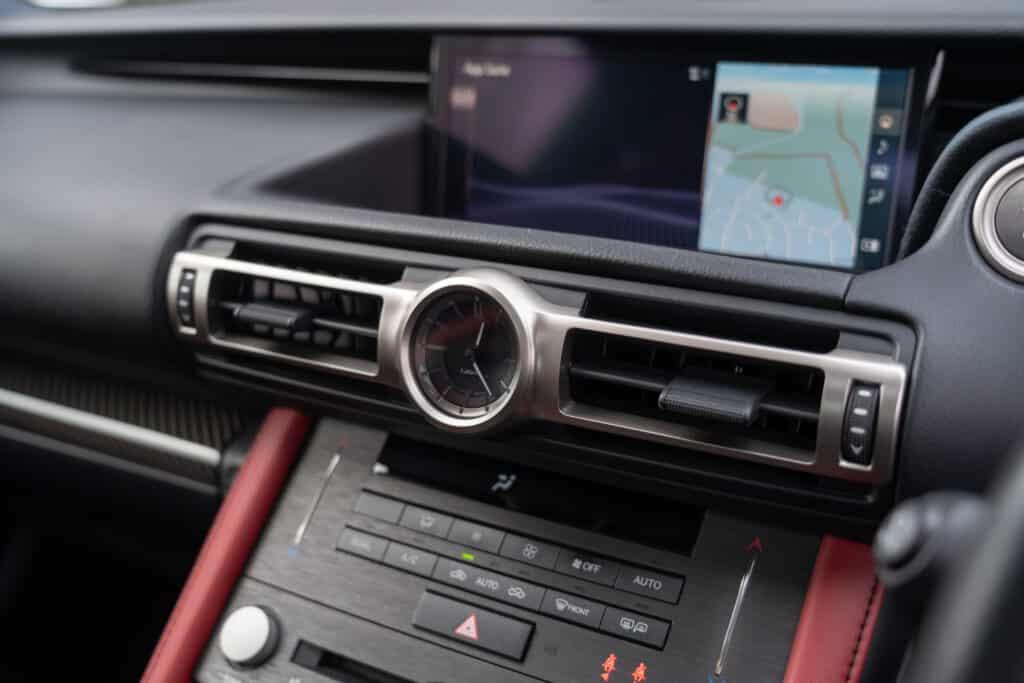
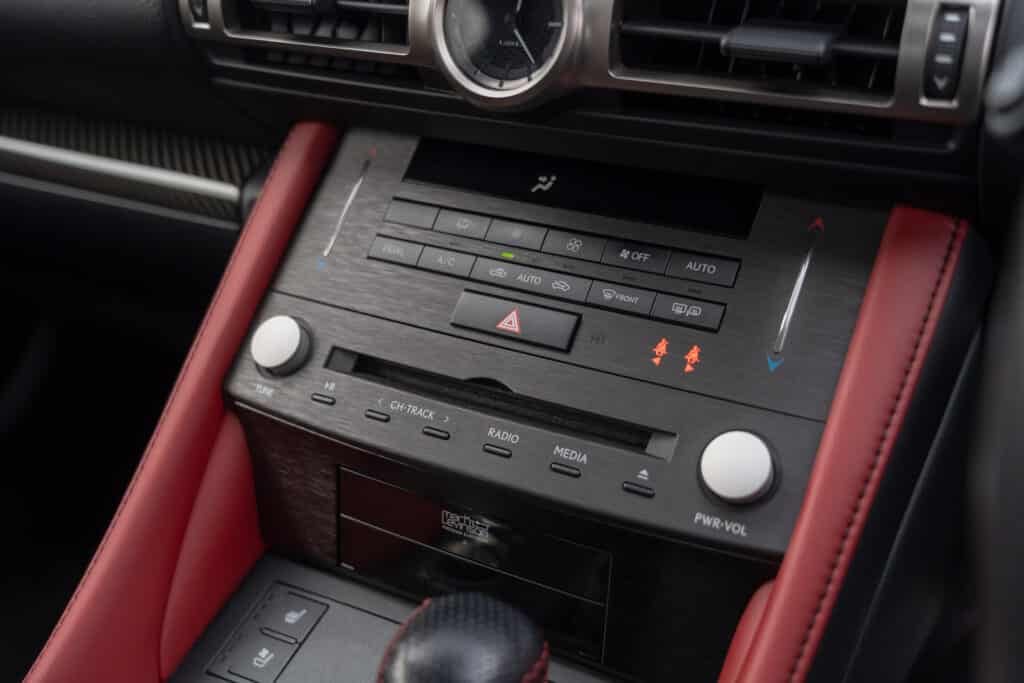
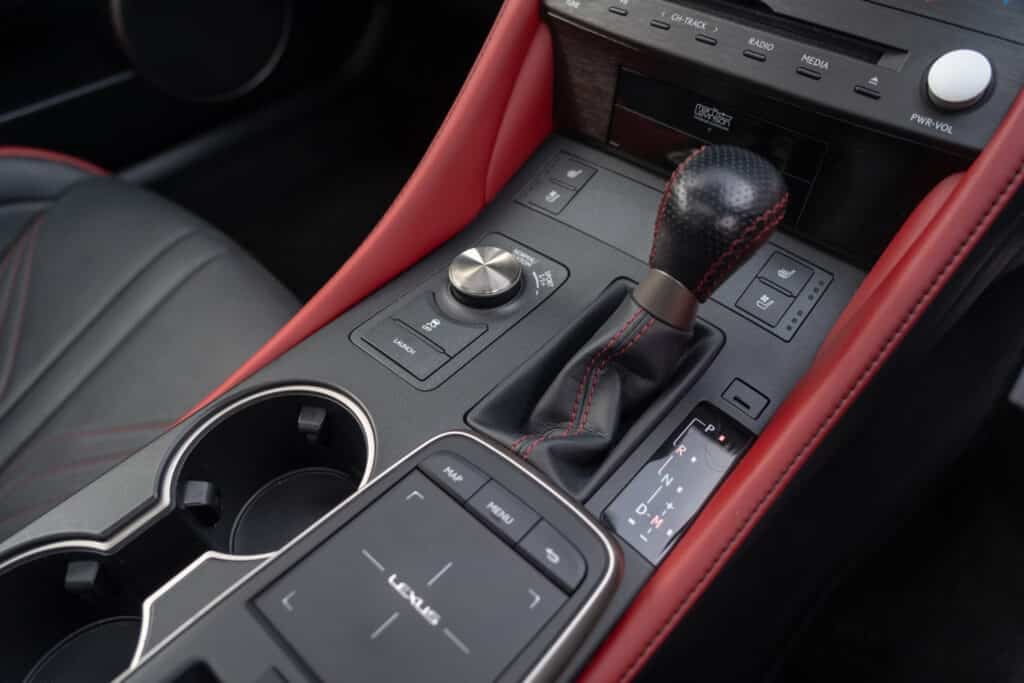
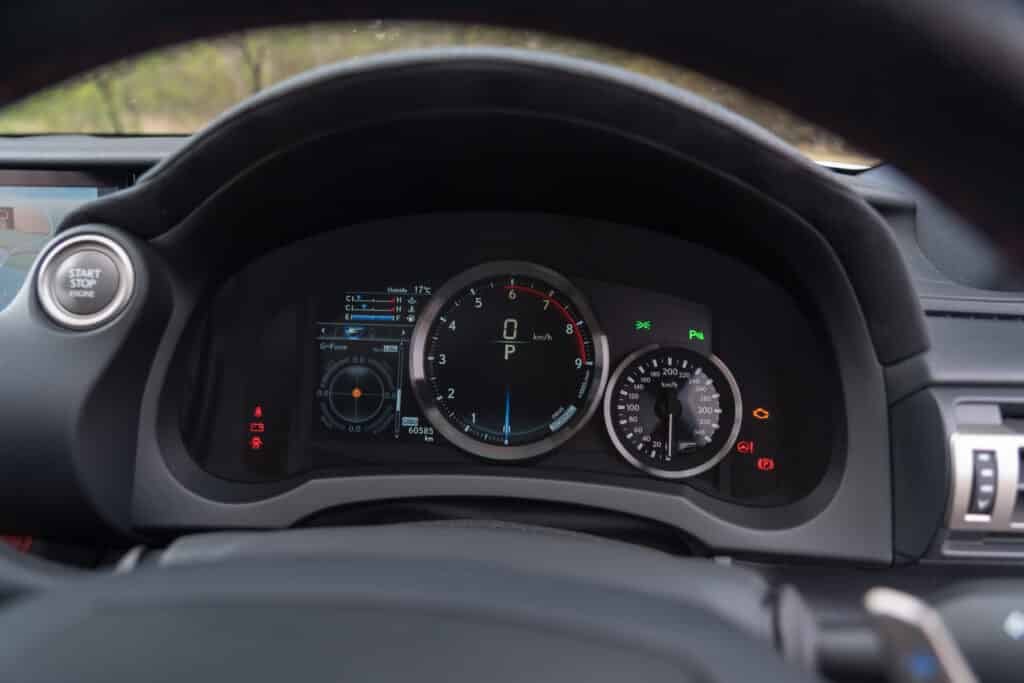
The Lexus RC might just be one of the most underrated luxury coupes on the used market in Australia. Launched locally in 2015, the RC was Lexus’ answer to cars like the BMW 4 Series, Audi A5, and Mercedes-Benz C-Class Coupe, but done in that uniquely Lexus way. Sleek styling, beautifully finished interiors, and impressive reliability wrapped in a premium 2-door GT package, the RC certainly had the credentials. But while it looked and felt the part, it arrived in a segment that was already starting to decline in popularity. Fast forward to now, and thanks to coupes falling out of favour with Aussie buyers (with the majority of the market buying Dual-Cab utes and SUVs), used prices have taken a hit, meaning you can now get a lot of car for the money.
The lineup in Australia has always been pretty straightforward, with three core variants: the RC200t, the RC350, and the V8-powered RC F. The RC200t ran a 2.0-litre turbocharged four-cylinder pushing out 180kW (241hp) and 350Nm (258 lb.ft) through an 8-speed automatic to the rear wheels. The mid-tier RC350 stepped things up with a naturally aspirated 3.5-litre V6 delivering a smoother 232kW (311hp) and 380Nm (280 lb.ft), also through the 8-speed auto. And then there’s the big boy: the RC F, with its glorious 5.0-litre naturally aspirated V8, pumping out a meaty 351kW (471hp)and 530Nm (391 lb.ft), again through a specially calibrated 8-speed auto, and again, to the rear wheels only.
In 2018, Lexus gave the RC a mid-cycle update. This brought mild exterior tweaks (most noticeably, redesigned headlights that moved from a two-piece to a more cohesive single unit), improved chassis tuning, better ride and handling balance, and updated tech and infotainment inside. It also saw the RC200t renamed the RC300, but crucially, it kept the same 2.0-litre turbo engine. Across its life, the RC’s trim levels have typically followed the Lexus structure: Luxury, F Sport, and Sports Luxury, with various special editions like the Enhancement Packs, Track or Carbon Editions, and 10th Anniversary Editions (for the RC F) sprinkled in. The Luxury trim gets most of the essentials, Lexus Safety System+, sat-nav, premium audio, and dual-zone climate. F Sport brings adaptive suspension, unique styling touches and sports seats, while Sports Luxury piles on real leather, Mark Levinson audio, and more plush touches.
Now, the RC might look like a sleek, all-new design, but under the skin it’s a bit of a Lexus Frankenstein. The front end is shared with the 4th-gen GS, the middle is based on the 2nd-gen IS Convertible, and the rear uses the platform from the 3rd-gen IS sedan. It’s a bit of luxury-brand Lego, but it also means component sharing with Toyota and Lexus models across the range. This is actually great news for long-term running costs and reliability. Lexus’ dealer support in Australia is excellent, and being effectively the premium arm of Toyota, parts availability and servicing are more affordable and less painful than most Euro rivals.
As for what you can’t get in Australia, well, Lexus did offer some interesting variants in other markets. In Japan and parts of Europe, there were hybrid versions like the RC300h, pairing a 2.5-litre petrol engine with an electric motor, and even an all-wheel-drive RC350. Unfortunately, Australia never officially received these models, though a few grey-import hybrids are starting to show up locally. Tempting for city commuters, but be sure to check for battery health and parts support before jumping in.
The Lexus RC is a bit of a niche buy in the current Aussie market, but that’s exactly what makes it so appealing. With its blend of standout design, typical Lexus craftsmanship, strong equipment levels and the peace of mind that comes from Toyota DNA, the RC is a compelling option for anyone after a used luxury coupe. Especially now that prices are softening, it’s a genuinely smart alternative to the usual German suspects, just with a bit more individuality and potentially a whole lot less stress.
And while Lexus is generally known for exceptional build quality and reliability, the RC isn’t completely without fault. A few common issues have popped up over the years, but more on that in our “What Goes Wrong” section below.

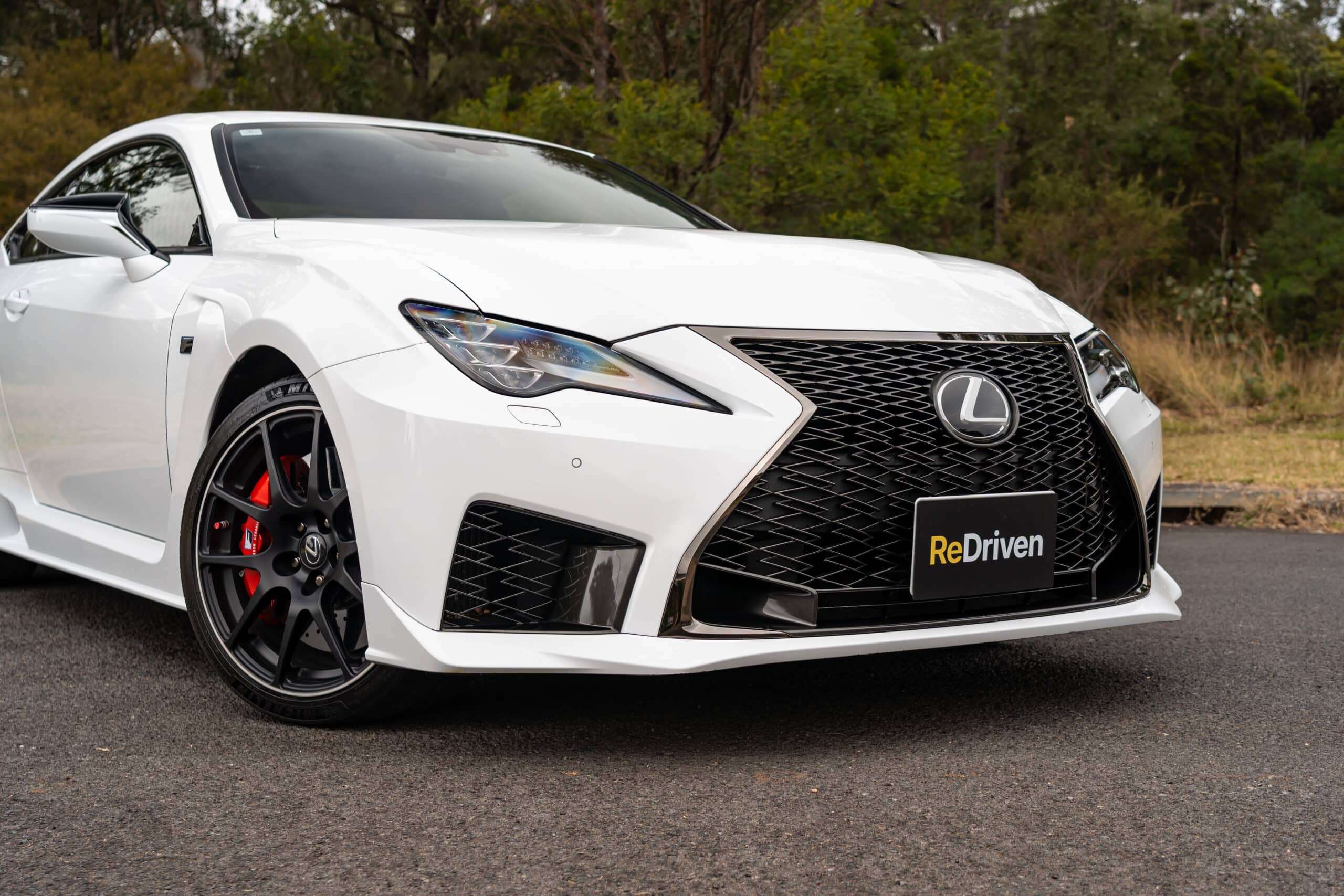

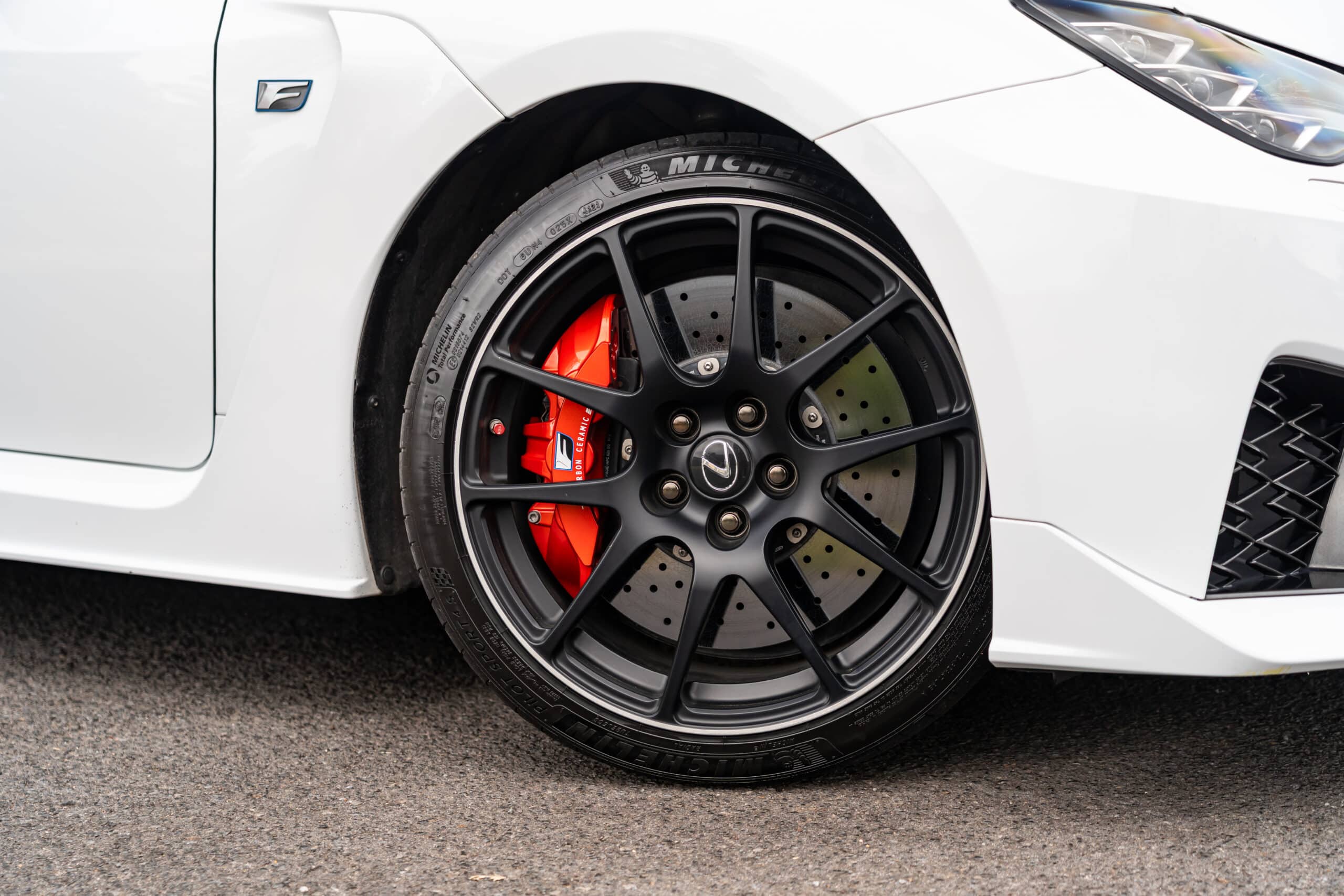
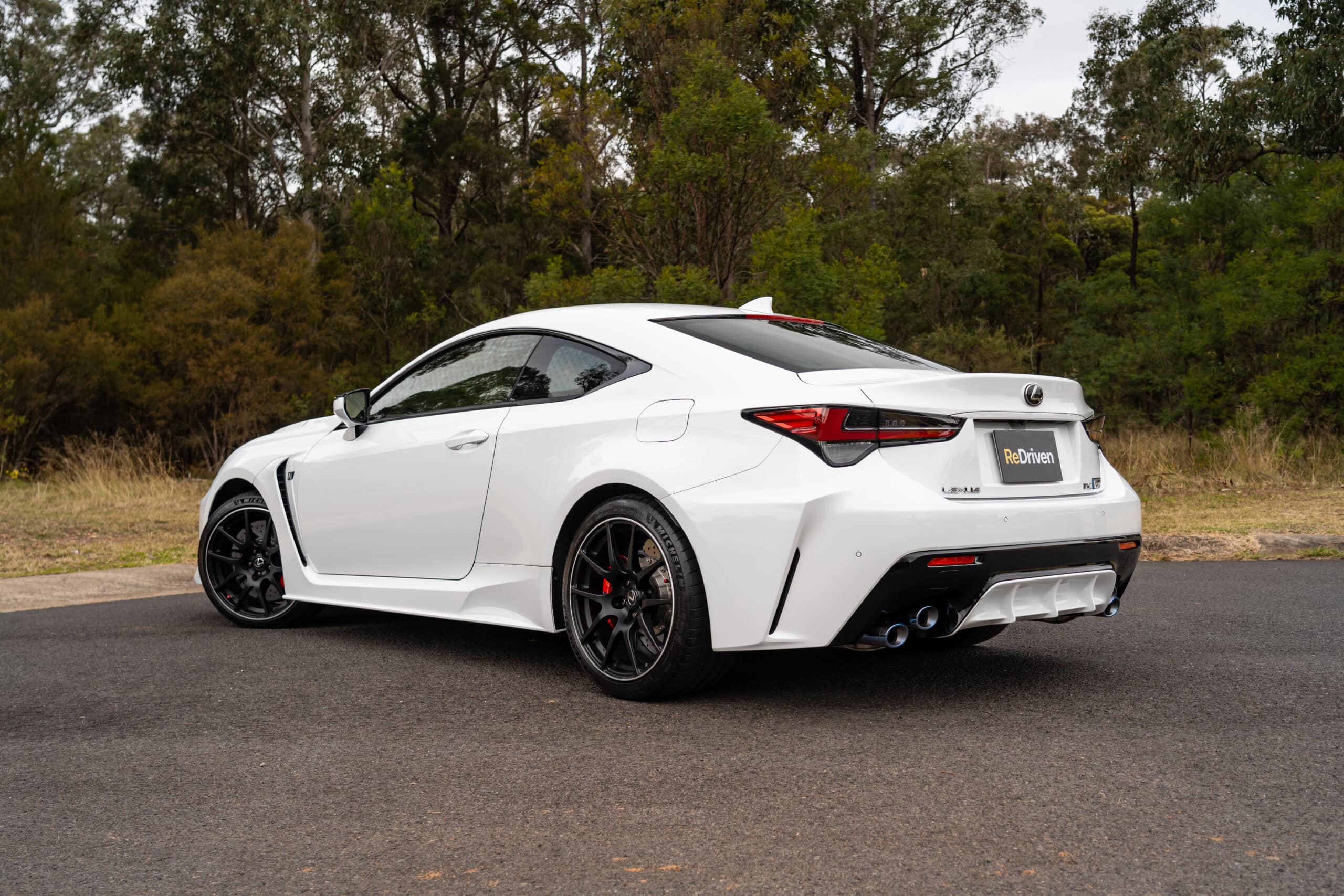
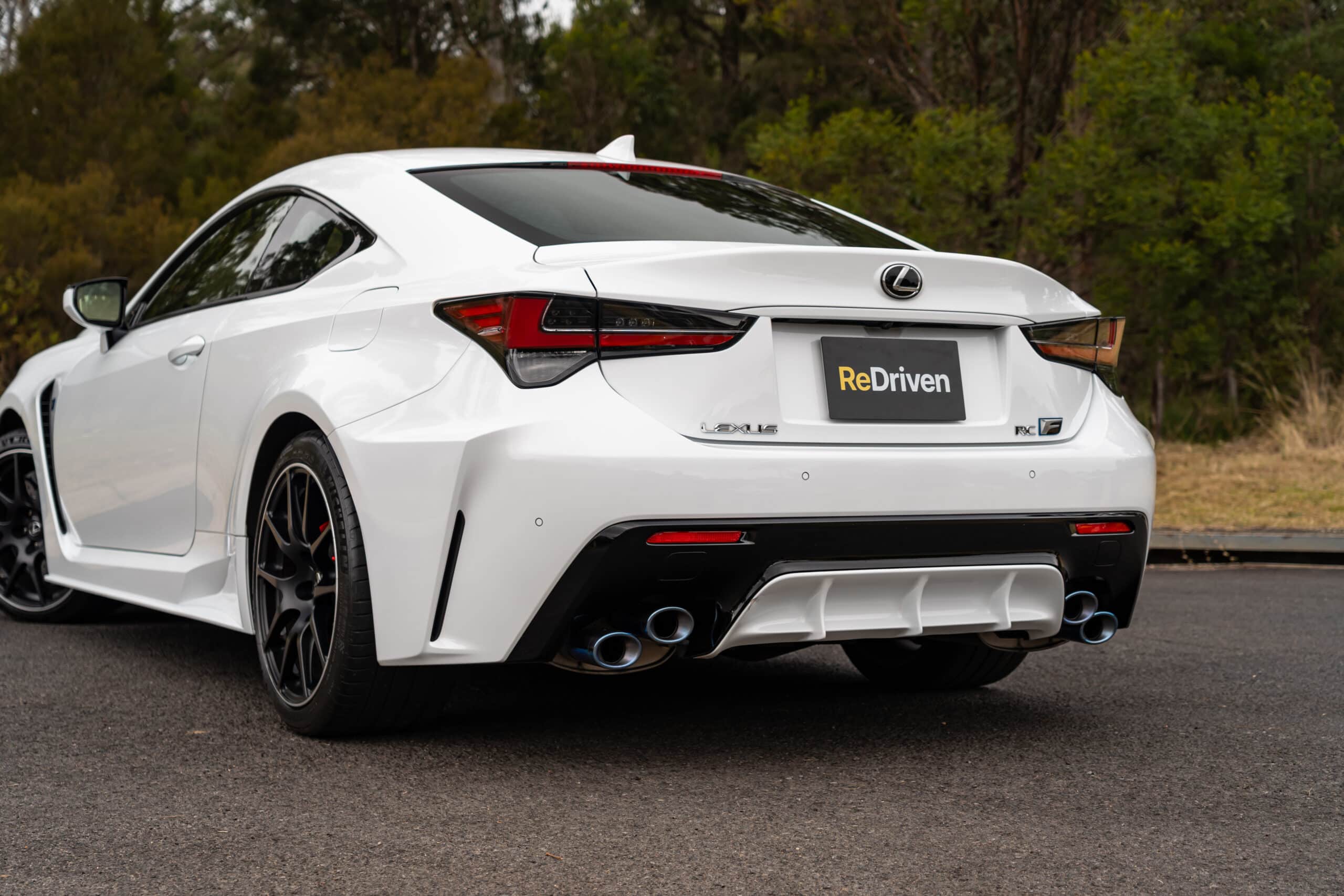

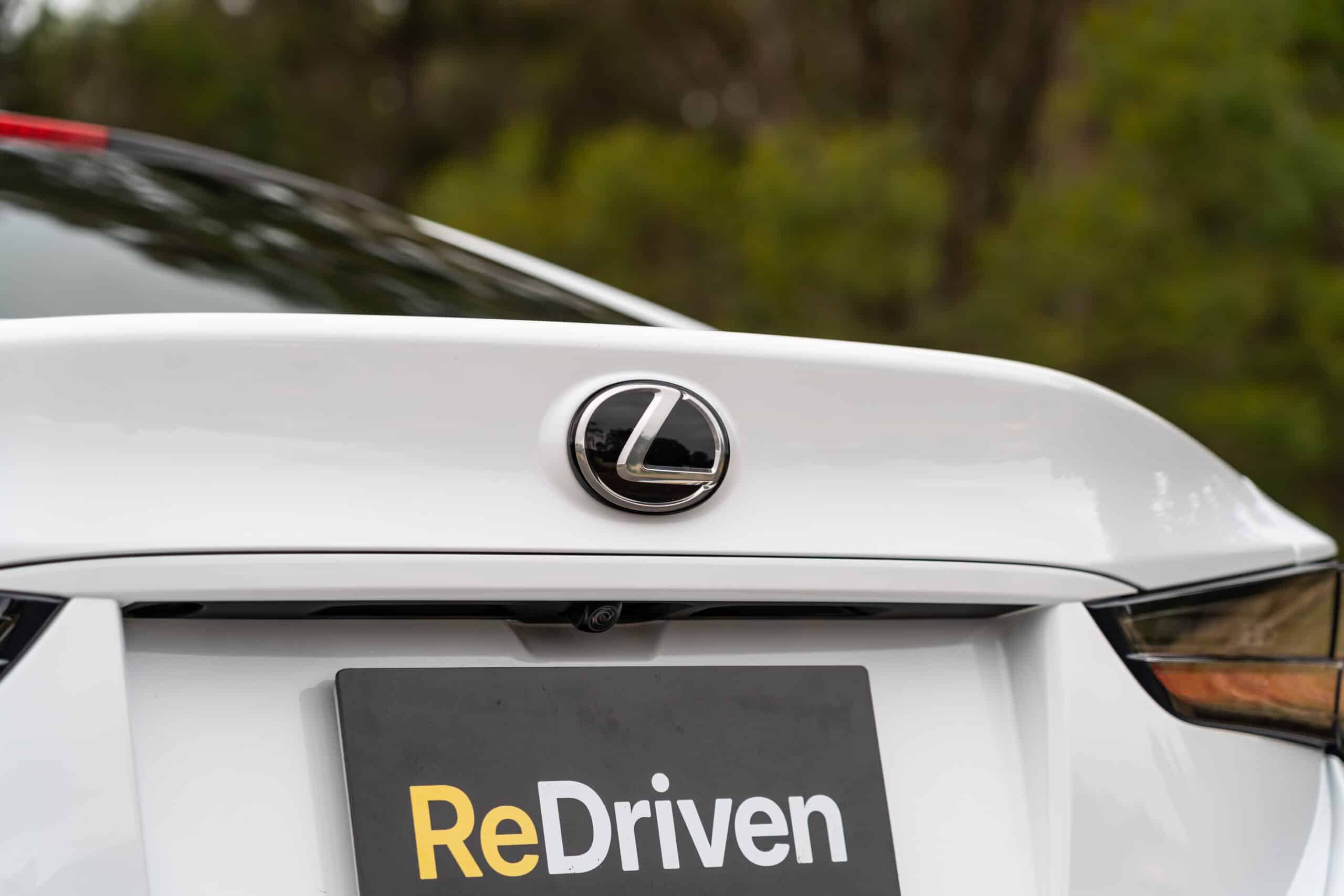
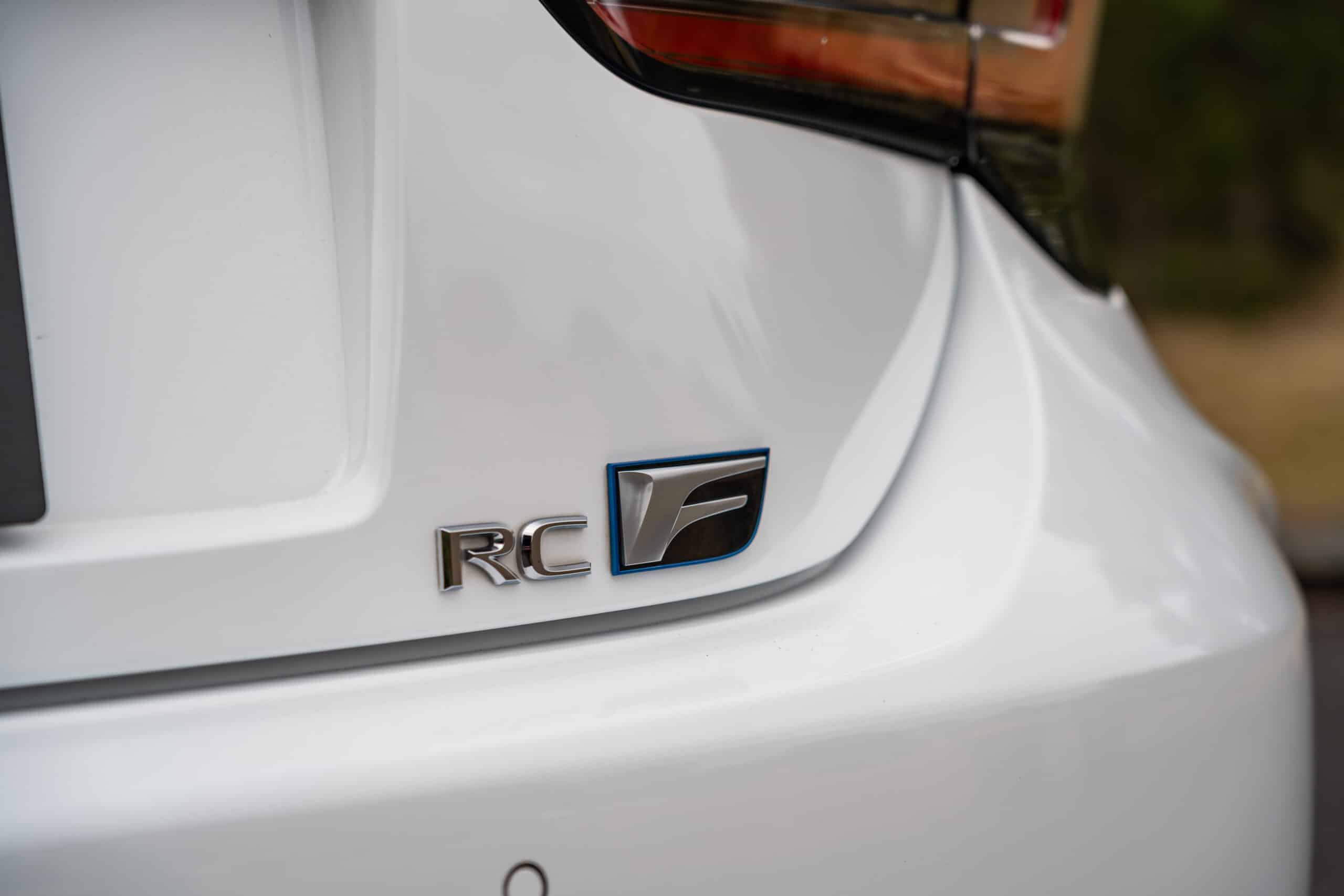
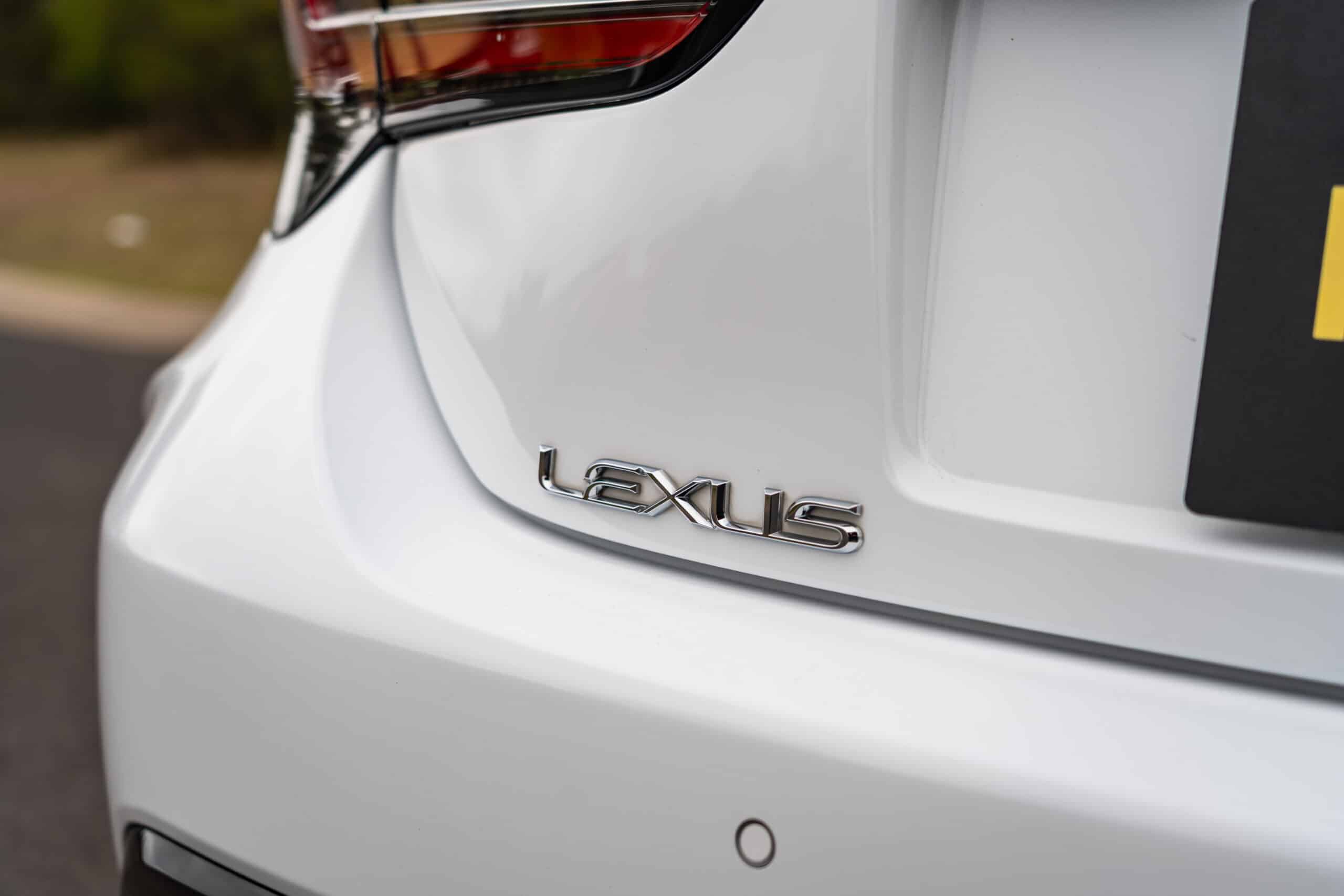
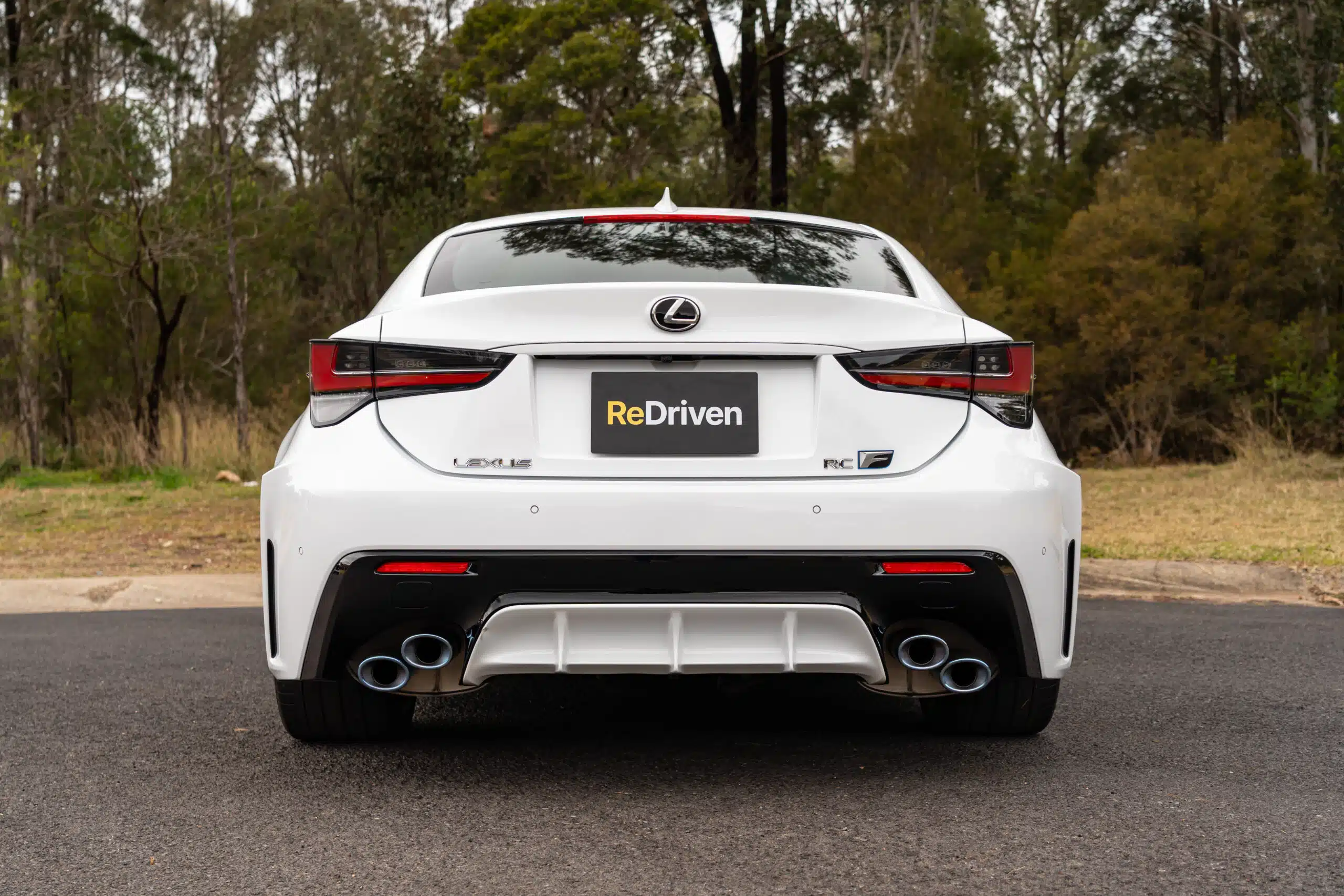
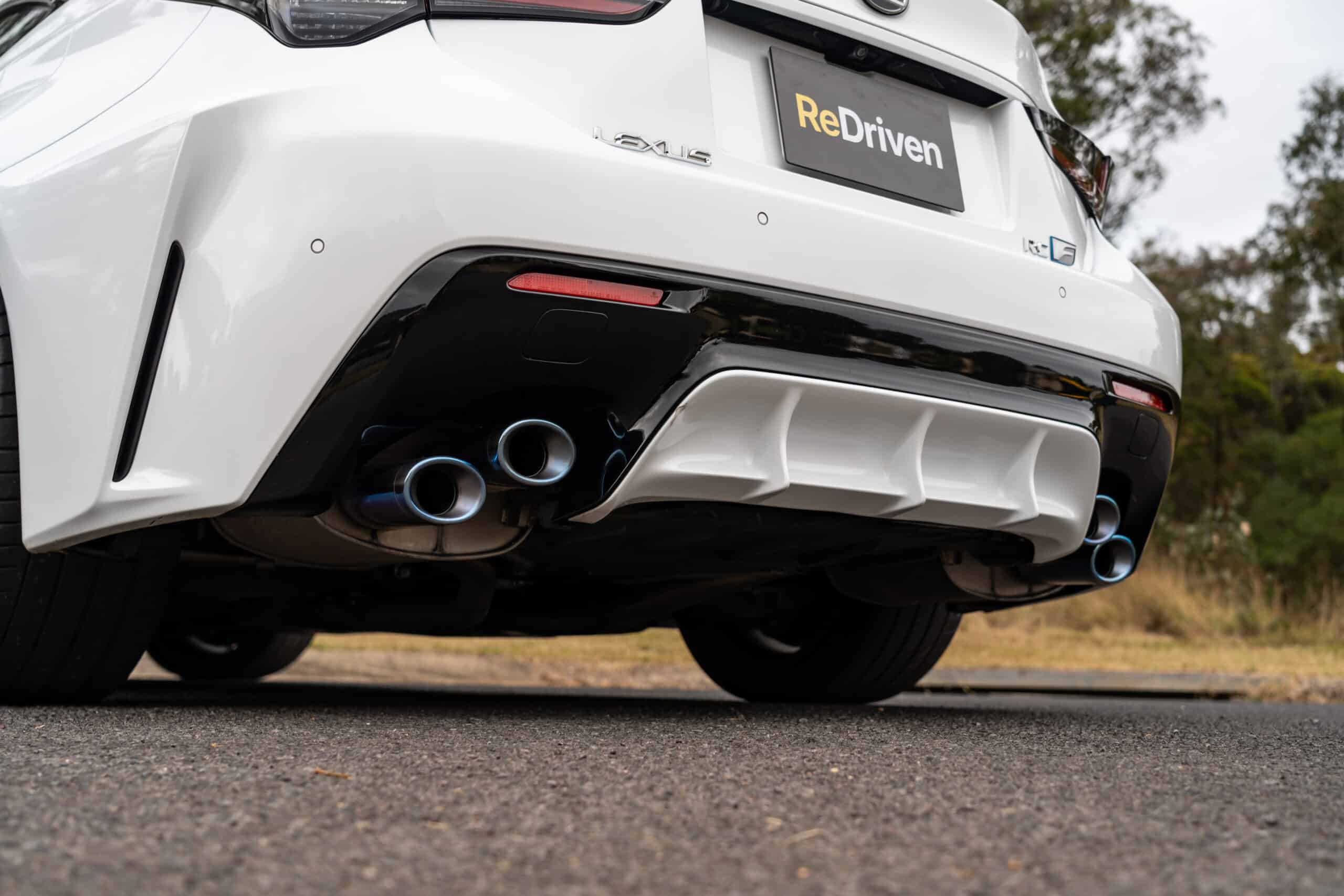
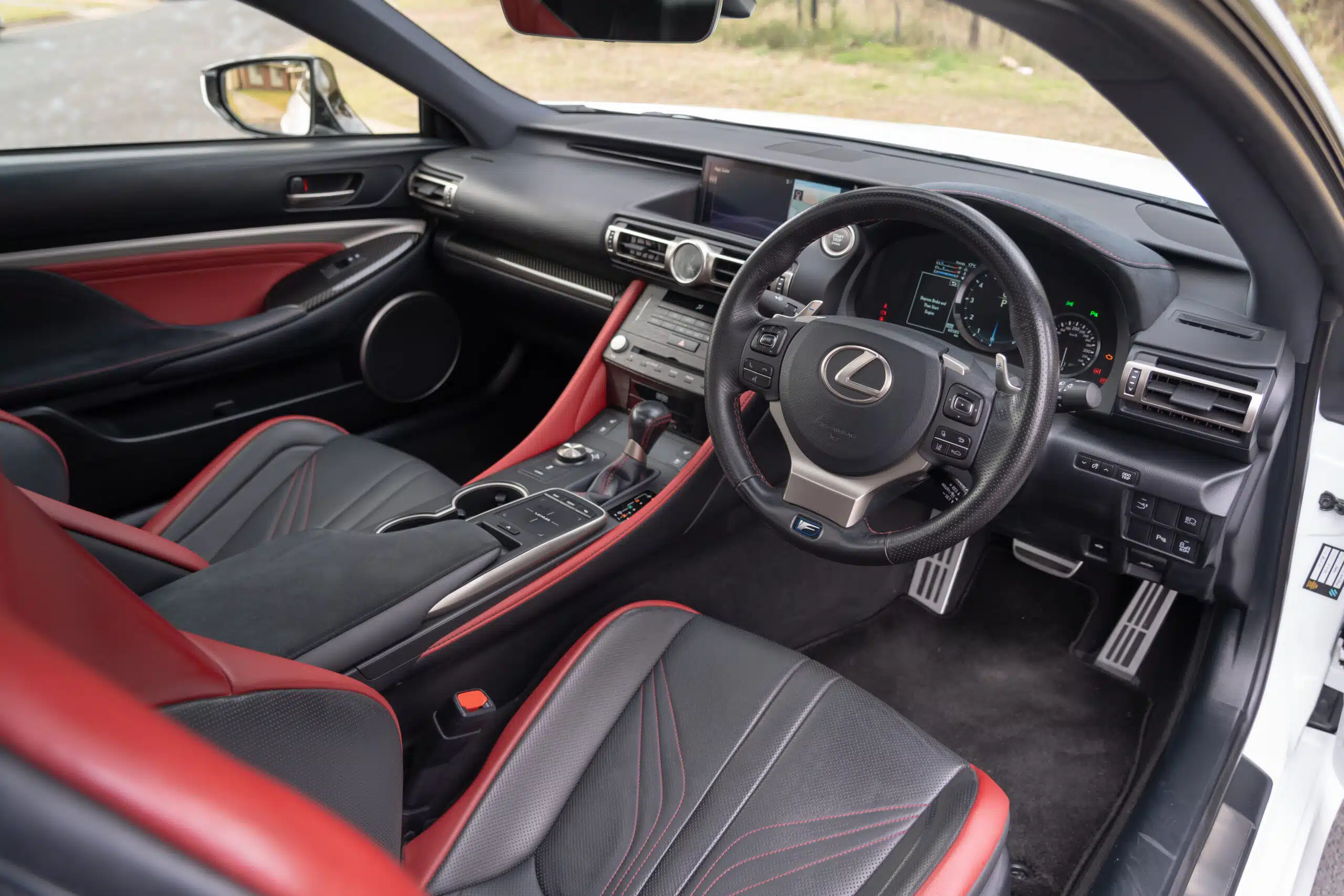
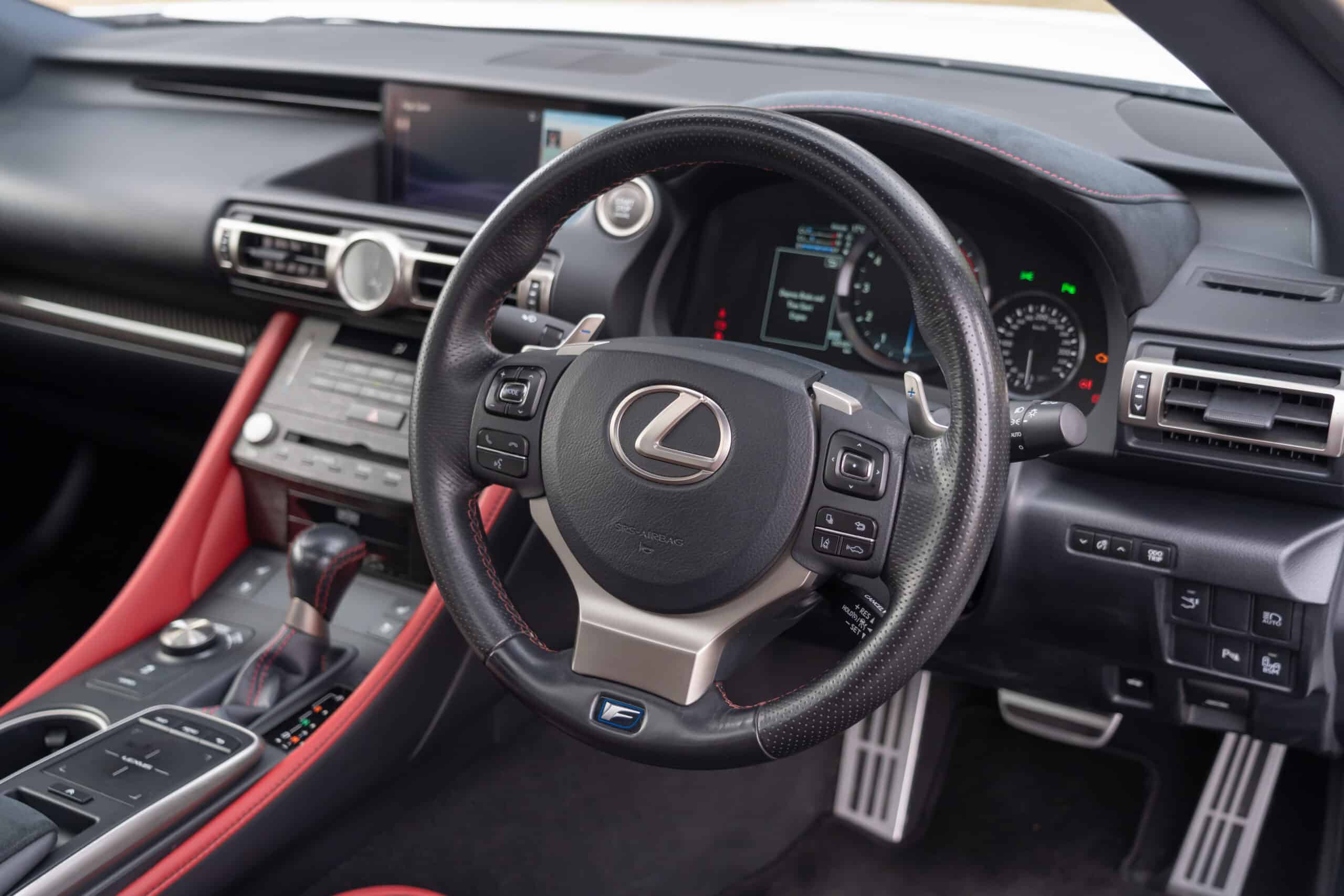
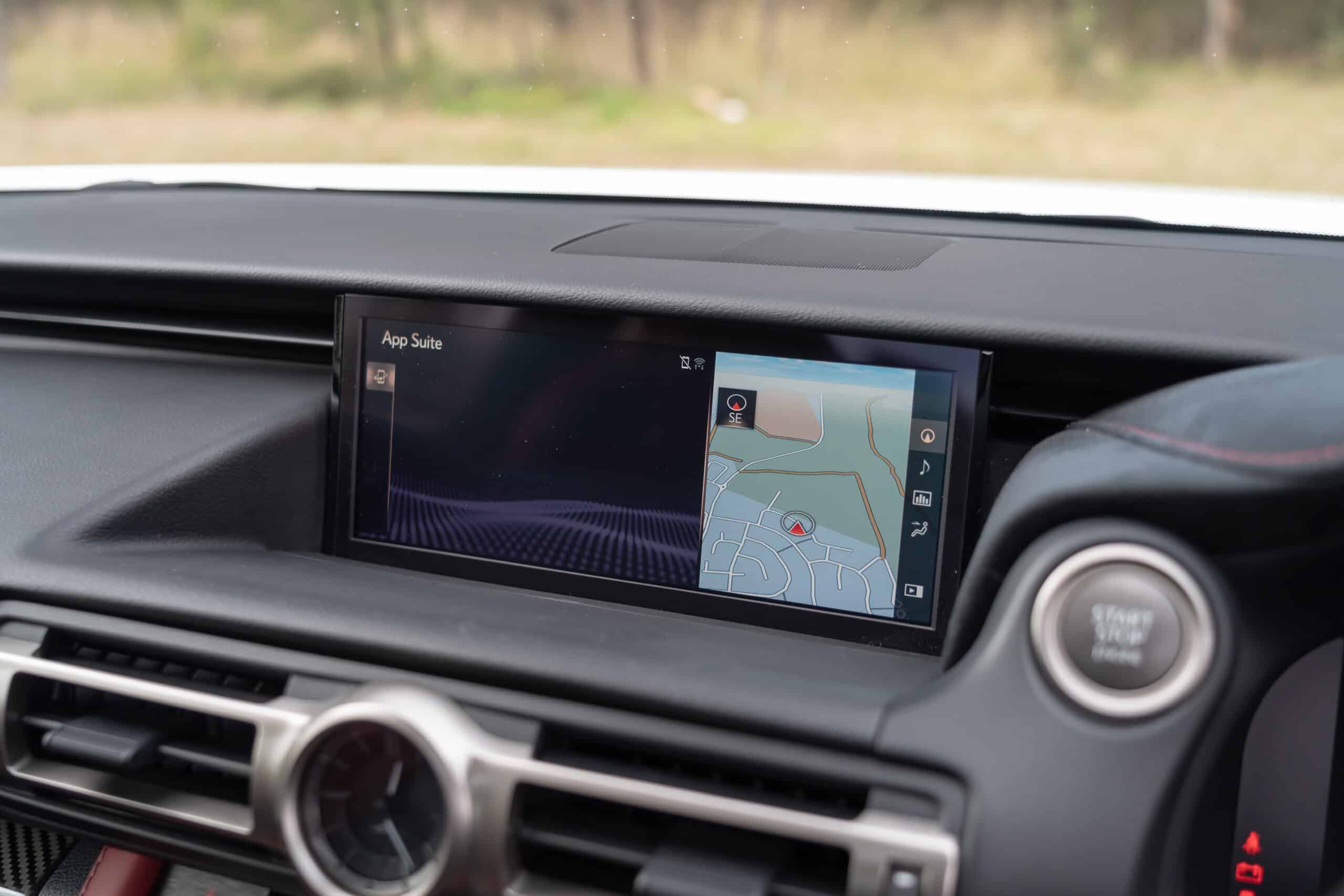
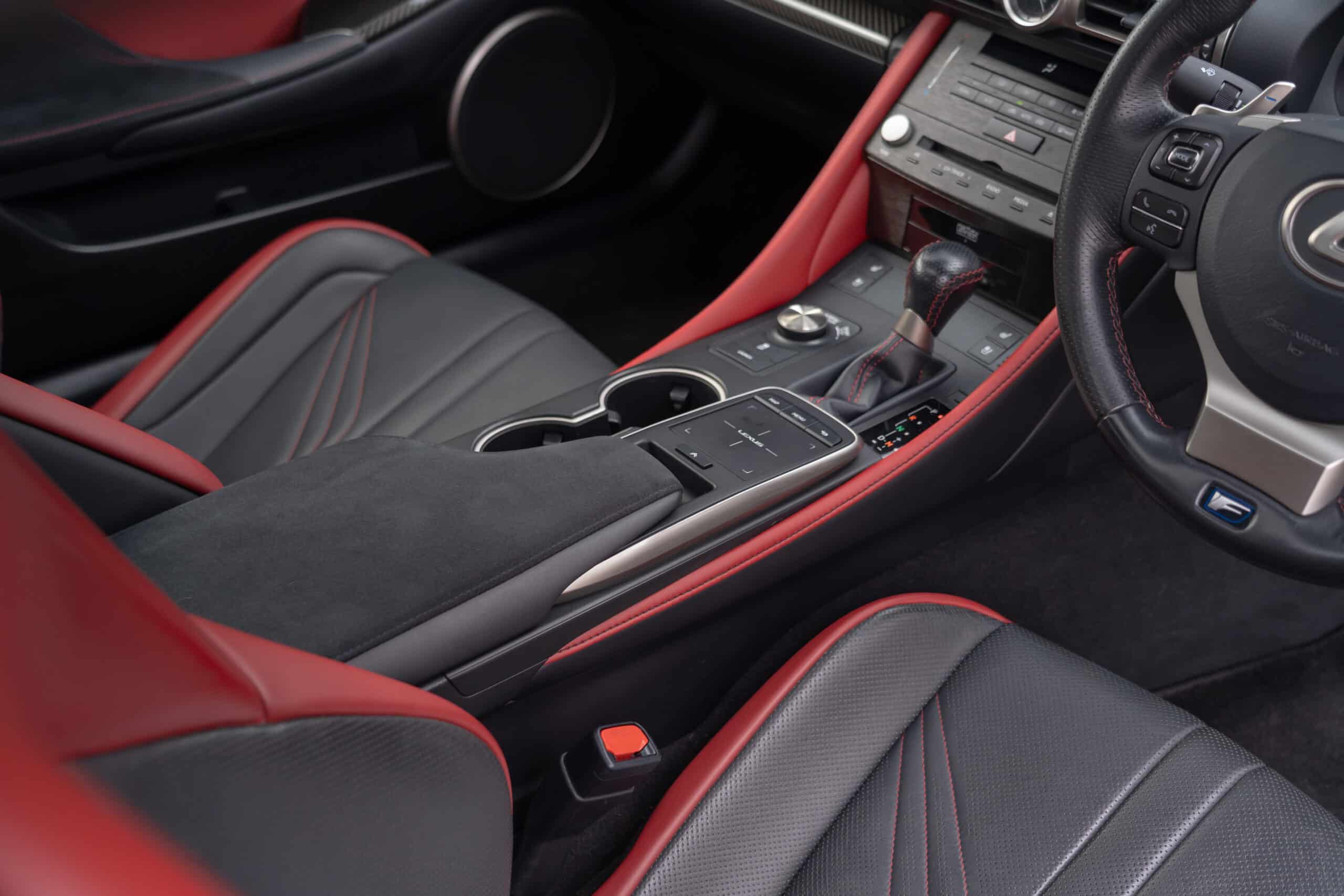
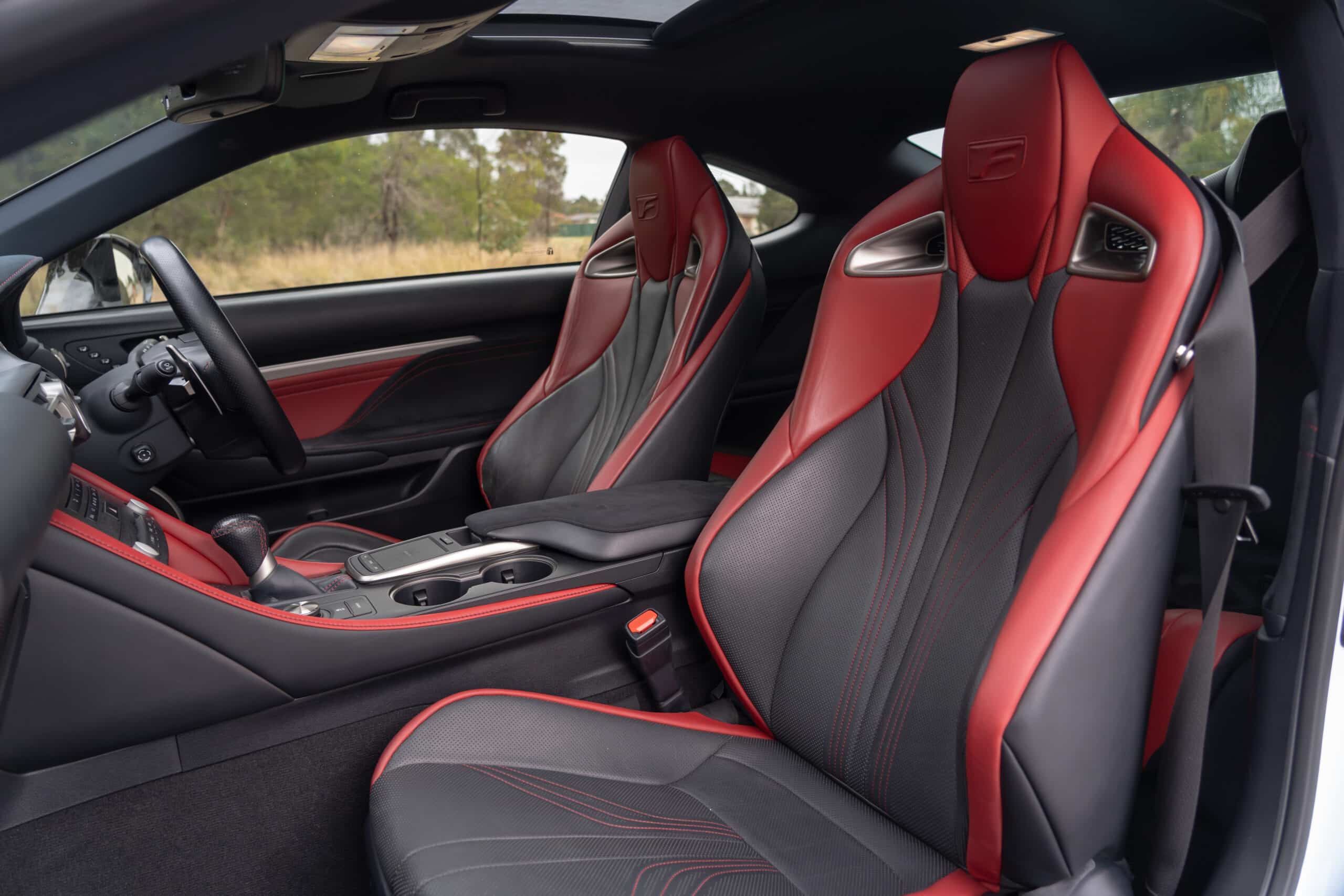
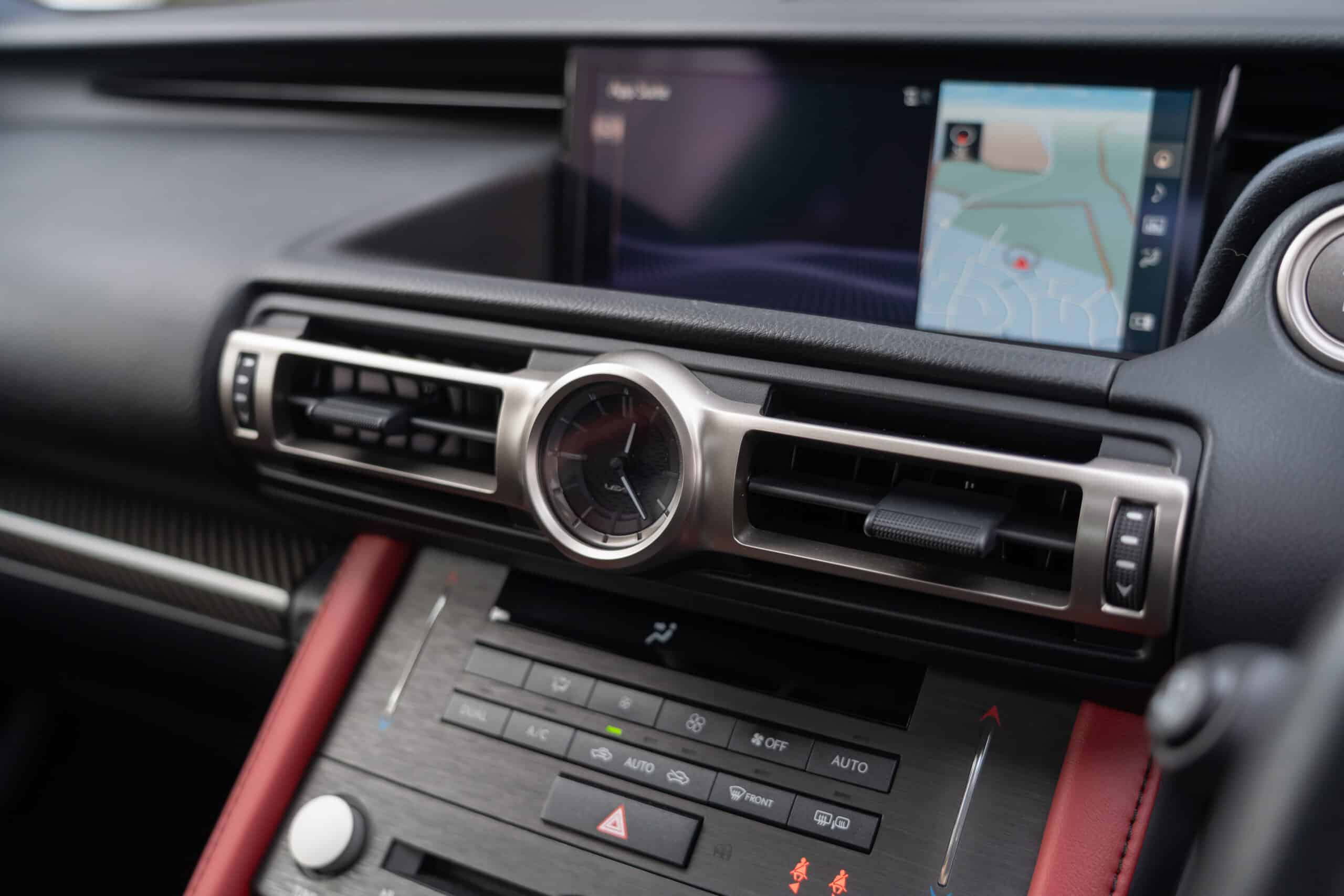
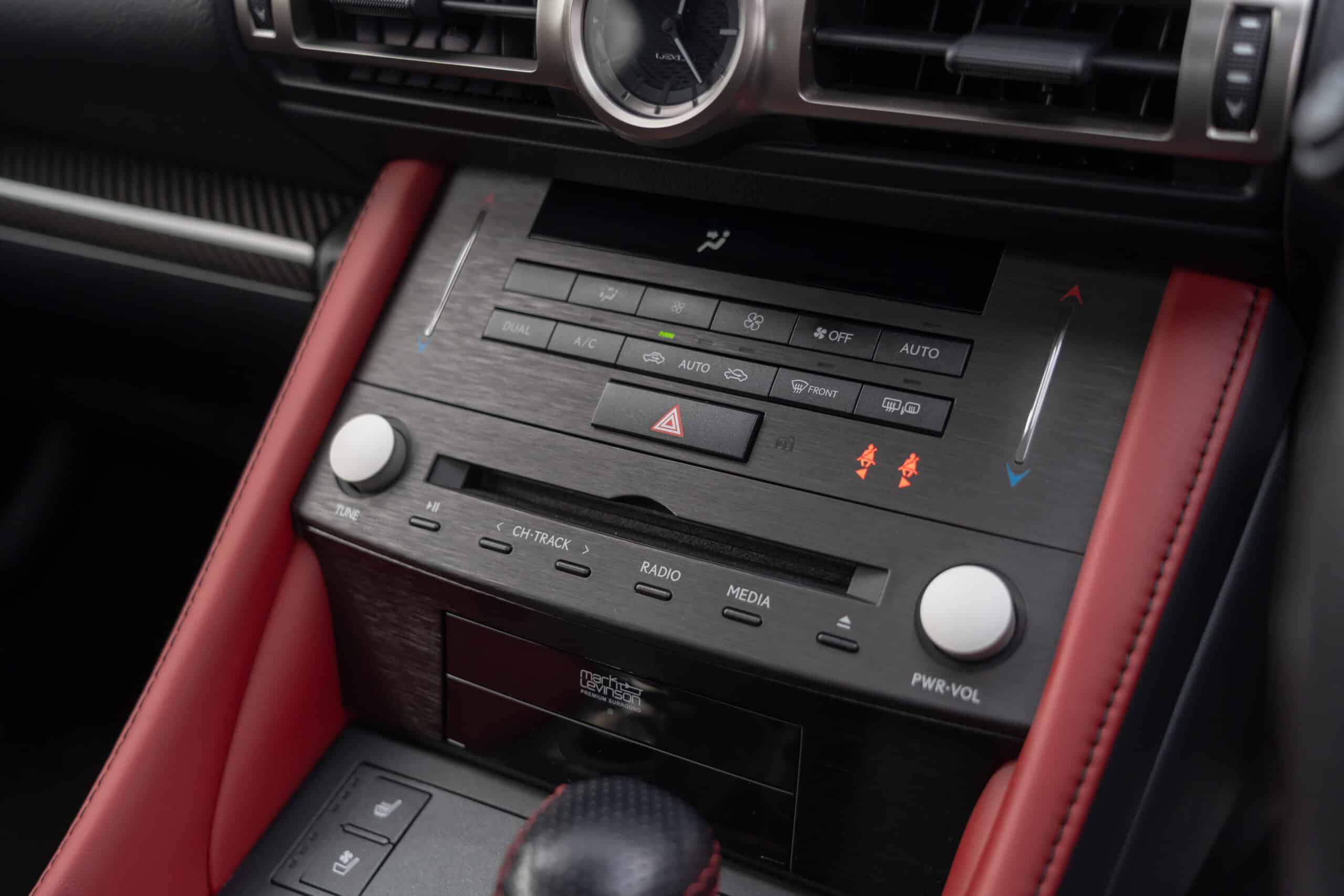
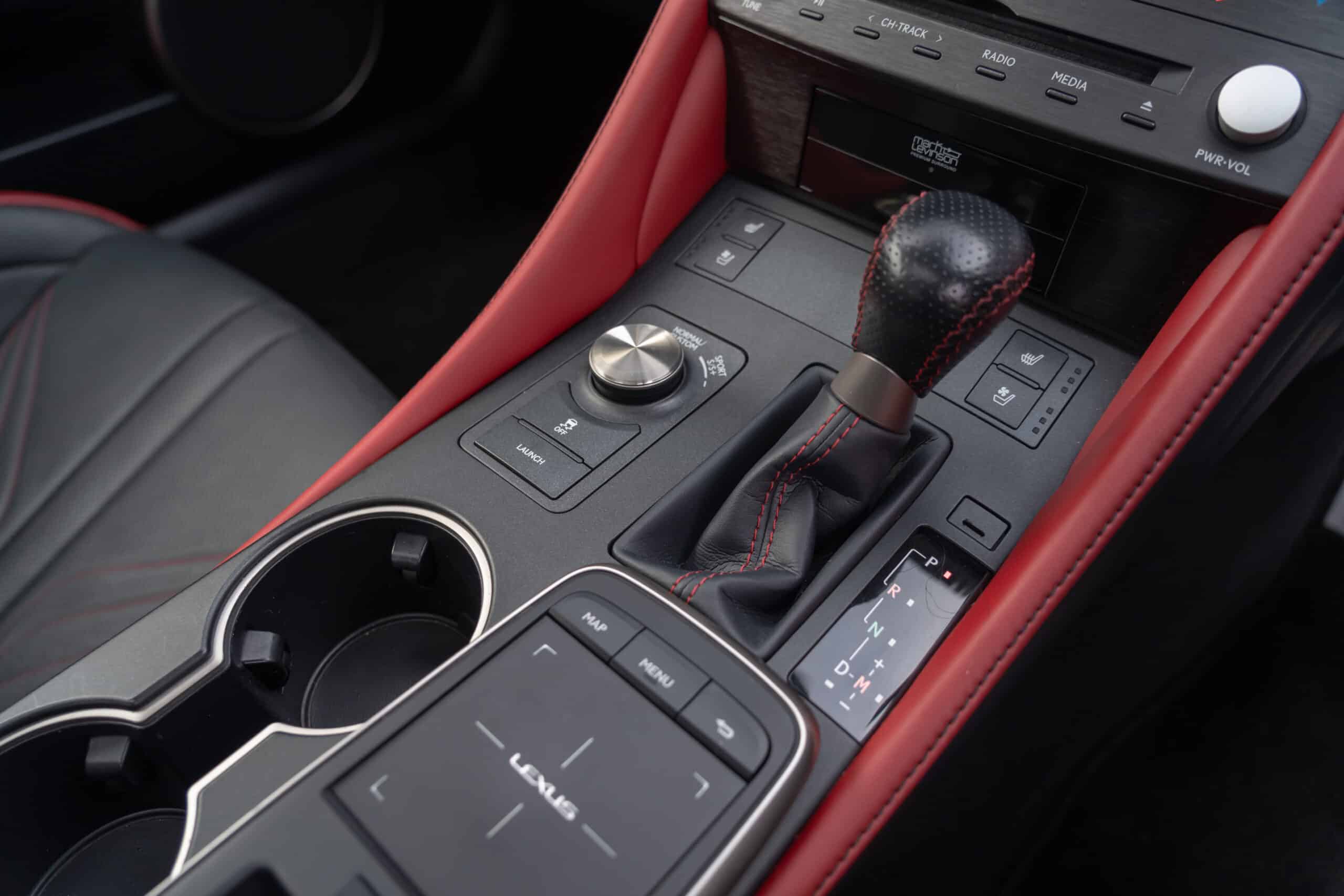
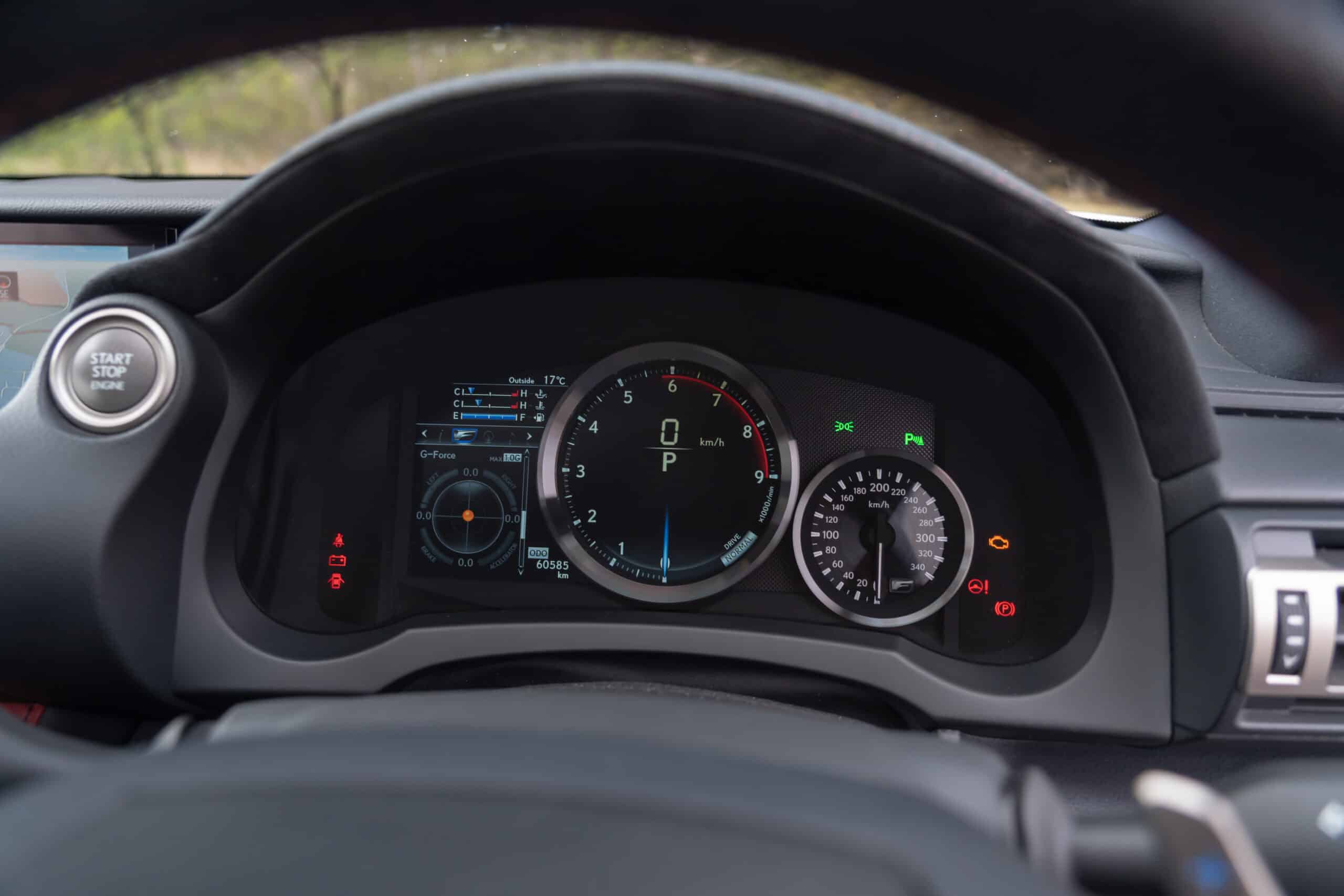





















Exterior:
In cold climates where the roads get salted, a handful of early-build RCs have been known to suffer from rust in the rear wheel arches. Apparently, Lexus dropped the ball a bit on the sealant in that area, which let corrosion sneak in over time. That said, it’s a problem basically unheard of here in Australia thanks to our warmer, salt-free roads and improved production quality as the model went on.
What can be an issue here though, especially if you’ve got one of the higher-spec or special edition RCs with sexy carbon fibre exterior bits, is premature fading or surface deterioration of those carbon parts thanks to our hot and harsh sun. Keep it garaged, clean and polished, and you’ll likely never notice it, but leave it out in the elements and those exotic bits can start to look pretty second-hand.
Easily the most common complaint with the RC’s exterior has to be excessive tyre wear, especially on the inside edge of the fronts. It’s often blamed on the factory geometry settings and from what we’ve seen, the F Sport and RC F models tend to fare a little better, probably thanks to stiffer suspension bushes. Swapping in upgraded bushes across the range can help reduce the issue. As for the rears, fitting aftermarket adjustable control arms seems to be the go, mainly because the factory arms don’t allow much alignment adjustment, and yeah, avoiding burnouts will definitely help your rear tyre life too.
Now, depending on the model and its mileage, some RCs are starting to show signs of shock absorber wear, including leaks, and in models equipped with AVS (Adaptive Variable Suspension), there have been a few reports of AVS failures, which can be very expensive to fix. But chances are yours will be fine, and if not, there’s a heap of excellent aftermarket options that are cheaper and just as good, if not better. Same deal with the brakes, before buying, check the discs and pads, especially on RC F models. Those Brembos might stop hard, but “Brembo” is Italian for “stops great but bloody expensive” when it comes to replacements.
Tyre Pressure Monitoring Systems can also throw a tantrum. In many cases, a simple reset fixes the issue, but some cars may need a little more attention. Still, compared to rivals like the Audi A5/S5/RS5, BMW 4 Series/M4, and Mercedes-Benz C-Class Coupes including the AMG variants, the RC seems to sidestep the plague of exterior electronic gremlins that commonly affect those Euro options.
The RC F’s powered rear wing can sometimes get stuck in either the up or down position, but that seems incredibly rare, and we
Exterior:
In cold climates where the roads get salted, a handful of early-build RCs have been known to suffer from rust in the rear wheel arches. Apparently, Lexus dropped the ball a bit on the sealant in that area, which let corrosion sneak in over time. That said, it’s a problem basically unheard of here in Australia thanks to our warmer, salt-free roads and improved production quality as the model went on.
What can be an issue here though, especially if you’ve got one of the higher-spec or special edition RCs with sexy carbon fibre exterior bits, is premature fading or surface deterioration of those carbon parts thanks to our hot and harsh sun. Keep it garaged, clean and polished, and you’ll likely never notice it, but leave it out in the elements and those exotic bits can start to look pretty second-hand.
Easily the most common complaint with the RC’s exterior has to be excessive tyre wear, especially on the inside edge of the fronts. It’s often blamed on the factory geometry settings and from what we’ve seen, the F Sport and RC F models tend to fare a little better, probably thanks to stiffer suspension bushes. Swapping in upgraded bushes across the range can help reduce the issue. As for the rears, fitting aftermarket adjustable control arms seems to be the go, mainly because the factory arms don’t allow much alignment adjustment, and yeah, avoiding burnouts will definitely help your rear tyre life too.
Now, depending on the model and its mileage, some RCs are starting to show signs of shock absorber wear, including leaks, and in models equipped with AVS (Adaptive Variable Suspension), there have been a few reports of AVS failures, which can be very expensive to fix. But chances are yours will be fine, and if not, there’s a heap of excellent aftermarket options that are cheaper and just as good, if not better. Same deal with the brakes, before buying, check the discs and pads, especially on RC F models. Those Brembos might stop hard, but “Brembo” is Italian for “stops great but bloody expensive” when it comes to replacements.
Tyre Pressure Monitoring Systems can also throw a tantrum. In many cases, a simple reset fixes the issue, but some cars may need a little more attention. Still, compared to rivals like the Audi A5/S5/RS5, BMW 4 Series/M4, and Mercedes-Benz C-Class Coupes including the AMG variants, the RC seems to sidestep the plague of exterior electronic gremlins that commonly affect those Euro options.
The RC F’s powered rear wing can sometimes get stuck in either the up or down position, but that seems incredibly rare, and we suspect it’s often just operator error.
As for the general fit and finish, the Lexus absolutely nails it, the panel gaps, paint quality and attention to detail are class-leading, and it’s genuinely hard to fault.
Interior:
For the most part, beautifully built and feels genuinely premium, but it’s not completely without its quirks, most of which stem from that bloody infotainment system. Lexus persisted with a laptop-style trackpad, which can be a bit fiddly to use, especially if you’re driving and trying to operate it with your non-dominant hand. On top of that, the native interface isn’t particularly intuitive, and many owners have voiced their frustration with it.
Thankfully, in 2020, Lexus finally added Apple CarPlay and Android Auto as standard, which helps enormously. Better still, if you’ve got a post-2017 model, you can have smartphone mirroring retrofitted by Lexus. That said, even with CarPlay or Android Auto, the system still takes some getting used to. Some owners love it, others can’t stand it, your experience may vary.
In earlier US models, there were some issues with dashboard delamination and door trims being easily marked, but Lexus apparently sorted that pretty quickly and those problems are very rare in Aussie-delivered cars.
One weird issue that does pop up from time to time is a servo motor failure in the HVAC system, usually around the 40,000km mark, which stops the passenger side vent from blowing cold air. There’s also the odd case of the seat cooling function heating up instead of cooling, usually due to the blower motor getting a bit too warm, but again, these are more the exception than the rule and certainly not widespread faults.
Mechanically:
2.0-litre turbo petrol 4-cylinder (8AR-FTS):
This engine has so far proven to be generally reliable, but it is part of a newer generation of Toyota powerplants that are more complex than their predecessors, there’s a bit more to potentially go wrong. Being turbocharged, it won’t be as forgiving if it’s neglected, so regular servicing and good quality oil are critical.
While issues have been relatively random and uncommon, long-term durability will largely come down to how well it’s been maintained.
2.5-litre petrol hybrid 4-cylinder (2AR-FXE):
Found in the RC300h, which was never officially sold in Australia but is turning up as a grey import, this is a much less complicated powertrain than the 2.0 turbo. There’s no turbo, fewer emissions components, and fewer moving parts to go wrong.
That said, watch out for a sticking EGR valve, which can make the car run rough, this issue is often misdiagnosed.
High-pressure fuel pump leaks can happen, but again, rarely. The real standout here is the 4th-gen Toyota hybrid system, which is bulletproof, just make sure the battery cooling fan filter is kept clean. And when it comes time to replace the hybrid battery, there’s no need to panic or fork out dealer money, there are excellent, far more affordable independent hybrid specialists that can sort you out.
3.5-litre petrol V6 (2GR-FSE and 2GR-FKS):
Easily one of the most reliable modern six-cylinder engines on the market.
The most commonly reported issues are water pump failures and the thermostat sticking open, which causes the engine to run too cold and throws a fault code. It’s usually wise to replace both the water pump and thermostat at the same time.
There’s also the occasional high-pressure fuel pump fault or purge valve issue that can trigger a lean code, but again, these are pretty rare and easy to fix.
5.0-litre petrol V8 (2UR-GSE):
This thing is an engineering masterpiece and arguably one of the most reliable V8s ever made, but it’s not totally immune to issues.
The most significant one is a coolant leak from the valley plate cover, which requires pulling the entire intake off to access, pretty labour intensive. If you’re already in there, it’s smart to replace the water pump as well, as it’s usually the next weakest link.
There have been scattered reports of high-pressure fuel pump faults and moderate oil consumption, but these are rare. Pre-2016 models also had occasional problems with timing chain tensioner wear, though Lexus quietly improved that in later builds.
Transmissions:
The autos in the RC range are solid units. Provided they’re serviced every 80,000km, you’re unlikely to run into problems.
The hybrid eCVT, which isn’t a traditional CVT but a planetary gear-based system, is incredibly durable, some consider it to be one of the most reliable transmissions ever built.
A final note for RC F buyers, some higher-spec examples came with the TVD (Torque Vectoring Differential). It’s a wonderful piece of tech when it’s working, but if it fails… you might want to sit down. Some owners have been quoted over $35,000 to replace it. That said, these failures are extremely rare, problems generally only occur due to abuse or complete neglect and the vast majority of owners never have a single issue with it.
Exterior:
In cold climates where the roads get salted, a handful of early-build RCs have been known to suffer from rust in the rear wheel arches. Apparently, Lexus dropped the ball a bit on the sealant in that area, which let corrosion sneak in over time. That said, it’s a problem basically unheard of here in Australia thanks to our warmer, salt-free roads and improved production quality as the model went on.
What can be an issue here though, especially if you’ve got one of the higher-spec or special edition RCs with sexy carbon fibre exterior bits, is premature fading or surface deterioration of those carbon parts thanks to our hot and harsh sun. Keep it garaged, clean and polished, and you’ll likely never notice it, but leave it out in the elements and those exotic bits can start to look pretty second-hand.
Easily the most common complaint with the RC’s exterior has to be excessive tyre wear, especially on the inside edge of the fronts. It’s often blamed on the factory geometry settings and from what we’ve seen, the F Sport and RC F models tend to fare a little better, probably thanks to stiffer suspension bushes. Swapping in upgraded bushes across the range can help reduce the issue. As for the rears, fitting aftermarket adjustable control arms seems to be the go, mainly because the factory arms don’t allow much alignment adjustment, and yeah, avoiding burnouts will definitely help your rear tyre life too.
Now, depending on the model and its mileage, some RCs are starting to show signs of shock absorber wear, including leaks, and in models equipped with AVS (Adaptive Variable Suspension), there have been a few reports of AVS failures, which can be very expensive to fix. But chances are yours will be fine, and if not, there’s a heap of excellent aftermarket options that are cheaper and just as good, if not better. Same deal with the brakes, before buying, check the discs and pads, especially on RC F models. Those Brembos might stop hard, but “Brembo” is Italian for “stops great but bloody expensive” when it comes to replacements.
Tyre Pressure Monitoring Systems can also throw a tantrum. In many cases, a simple reset fixes the issue, but some cars may need a little more attention. Still, compared to rivals like the Audi A5/S5/RS5, BMW 4 Series/M4, and Mercedes-Benz C-Class Coupes including the AMG variants, the RC seems to sidestep the plague of exterior electronic gremlins that commonly affect those Euro options.
The RC F’s powered rear wing can sometimes get stuck in either the up or down position, but that seems incredibly rare, and we suspect it’s often just operator error.
As for the general fit and finish, the Lexus absolutely nails it, the panel gaps, paint quality and attention to detail are class-leading, and it’s genuinely hard to fault.
Interior:
For the most part, beautifully built and feels genuinely premium, but it’s not completely without its quirks, most of which stem from that bloody infotainment system. Lexus persisted with a laptop-style trackpad, which can be a bit fiddly to use, especially if you’re driving and trying to operate it with your non-dominant hand. On top of that, the native interface isn’t particularly intuitive, and many owners have voiced their frustration with it.
Thankfully, in 2020, Lexus finally added Apple CarPlay and Android Auto as standard, which helps enormously. Better still, if you’ve got a post-2017 model, you can have smartphone mirroring retrofitted by Lexus. That said, even with CarPlay or Android Auto, the system still takes some getting used to. Some owners love it, others can’t stand it, your experience may vary.
In earlier US models, there were some issues with dashboard delamination and door trims being easily marked, but Lexus apparently sorted that pretty quickly and those problems are very rare in Aussie-delivered cars.
One weird issue that does pop up from time to time is a servo motor failure in the HVAC system, usually around the 40,000km mark, which stops the passenger side vent from blowing cold air. There’s also the odd case of the seat cooling function heating up instead of cooling, usually due to the blower motor getting a bit too warm, but again, these are more the exception than the rule and certainly not widespread faults.
Mechanically:
2.0-litre turbo petrol 4-cylinder (8AR-FTS):
This engine has so far proven to be generally reliable, but it is part of a newer generation of Toyota powerplants that are more complex than their predecessors, there’s a bit more to potentially go wrong. Being turbocharged, it won’t be as forgiving if it’s neglected, so regular servicing and good quality oil are critical.
While issues have been relatively random and uncommon, long-term durability will largely come down to how well it’s been maintained.
2.5-litre petrol hybrid 4-cylinder (2AR-FXE):
Found in the RC300h, which was never officially sold in Australia but is turning up as a grey import, this is a much less complicated powertrain than the 2.0 turbo. There’s no turbo, fewer emissions components, and fewer moving parts to go wrong.
That said, watch out for a sticking EGR valve, which can make the car run rough, this issue is often misdiagnosed.
High-pressure fuel pump leaks can happen, but again, rarely. The real standout here is the 4th-gen Toyota hybrid system, which is bulletproof, just make sure the battery cooling fan filter is kept clean. And when it comes time to replace the hybrid battery, there’s no need to panic or fork out dealer money, there are excellent, far more affordable independent hybrid specialists that can sort you out.
3.5-litre petrol V6 (2GR-FSE and 2GR-FKS):
Easily one of the most reliable modern six-cylinder engines on the market.
The most commonly reported issues are water pump failures and the thermostat sticking open, which causes the engine to run too cold and throws a fault code. It’s usually wise to replace both the water pump and thermostat at the same time.
There’s also the occasional high-pressure fuel pump fault or purge valve issue that can trigger a lean code, but again, these are pretty rare and easy to fix.
5.0-litre petrol V8 (2UR-GSE):
This thing is an engineering masterpiece and arguably one of the most reliable V8s ever made, but it’s not totally immune to issues.
The most significant one is a coolant leak from the valley plate cover, which requires pulling the entire intake off to access, pretty labour intensive. If you’re already in there, it’s smart to replace the water pump as well, as it’s usually the next weakest link.
There have been scattered reports of high-pressure fuel pump faults and moderate oil consumption, but these are rare. Pre-2016 models also had occasional problems with timing chain tensioner wear, though Lexus quietly improved that in later builds.
Transmissions:
The autos in the RC range are solid units. Provided they’re serviced every 80,000km, you’re unlikely to run into problems.
The hybrid eCVT, which isn’t a traditional CVT but a planetary gear-based system, is incredibly durable, some consider it to be one of the most reliable transmissions ever built.
A final note for RC F buyers, some higher-spec examples came with the TVD (Torque Vectoring Differential). It’s a wonderful piece of tech when it’s working, but if it fails… you might want to sit down. Some owners have been quoted over $35,000 to replace it. That said, these failures are extremely rare, problems generally only occur due to abuse or complete neglect and the vast majority of owners never have a single issue with it.
When it comes to whether you should buy a Lexus RC, we’re a bit torn, especially when it comes to the lower-spec variants.
Honestly, we just don’t really get the appeal of the RC200t or RC300. Buying a car that looks as aggressive and premium as the RC does, then pairing it with the least powerful engine in the lineup feels a bit like buying a fake Rolex or knock-off Louis Vuitton bag. Sure, it looks the part, but it lacks any real credibility under the surface. Plus, they’re the least desirable versions of the RC, which means they’re far more likely to take a hit in depreciation over time. And considering that a used RC350 often goes for only a little more cash, why wouldn’t you just buy one of those instead? You absolutely should.
Because, to us, the RC350 is the sweet spot in the range. It delivers all the performance you’re ever realistically going to need for street driving, without the higher running costs or premiums that come with the V8. It’s also a bit easier on fuel, and that 3.5-litre V6 is damn near bulletproof. Short of the V8’s thundering soundtrack, the 350 gives you everything that makes the RC so appealing, looks, comfort, quality, performance, just in a slightly more sensible package.
But, if your budget stretches to a RC F, you’d be mad not to go for it.
At this point, the RC F is in a bit of
When it comes to whether you should buy a Lexus RC, we’re a bit torn, especially when it comes to the lower-spec variants.
Honestly, we just don’t really get the appeal of the RC200t or RC300. Buying a car that looks as aggressive and premium as the RC does, then pairing it with the least powerful engine in the lineup feels a bit like buying a fake Rolex or knock-off Louis Vuitton bag. Sure, it looks the part, but it lacks any real credibility under the surface. Plus, they’re the least desirable versions of the RC, which means they’re far more likely to take a hit in depreciation over time. And considering that a used RC350 often goes for only a little more cash, why wouldn’t you just buy one of those instead? You absolutely should.
Because, to us, the RC350 is the sweet spot in the range. It delivers all the performance you’re ever realistically going to need for street driving, without the higher running costs or premiums that come with the V8. It’s also a bit easier on fuel, and that 3.5-litre V6 is damn near bulletproof. Short of the V8’s thundering soundtrack, the 350 gives you everything that makes the RC so appealing, looks, comfort, quality, performance, just in a slightly more sensible package.
But, if your budget stretches to a RC F, you’d be mad not to go for it.
At this point, the RC F is in a bit of a class of its own. Compared to its rivals from BMW M, Audi RS and AMG, the Lexus brings with it a level of build quality and reliability that’s practically unmatched. Ownership and maintenance costs are noticeably lower, resale is generally stronger, it’s just as much fun to drive in its own way, and thanks to slightly more relaxed acceleration figures, it might even be a little gentler on your licence. Which, let’s be honest, is a real plus in Australia’s speed camera-laden landscape.
Just budget for a replacement infotainment system or at least an upgrade to Apple CarPlay or Android Auto, and maybe avoid putting anyone you like in the back seat unless they’re under 10 or very, very flexible or you hate them. But aside from that, yes, absolutely buy one.
When it comes to whether you should buy a Lexus RC, we’re a bit torn, especially when it comes to the lower-spec variants.
Honestly, we just don’t really get the appeal of the RC200t or RC300. Buying a car that looks as aggressive and premium as the RC does, then pairing it with the least powerful engine in the lineup feels a bit like buying a fake Rolex or knock-off Louis Vuitton bag. Sure, it looks the part, but it lacks any real credibility under the surface. Plus, they’re the least desirable versions of the RC, which means they’re far more likely to take a hit in depreciation over time. And considering that a used RC350 often goes for only a little more cash, why wouldn’t you just buy one of those instead? You absolutely should.
Because, to us, the RC350 is the sweet spot in the range. It delivers all the performance you’re ever realistically going to need for street driving, without the higher running costs or premiums that come with the V8. It’s also a bit easier on fuel, and that 3.5-litre V6 is damn near bulletproof. Short of the V8’s thundering soundtrack, the 350 gives you everything that makes the RC so appealing, looks, comfort, quality, performance, just in a slightly more sensible package.
But, if your budget stretches to a RC F, you’d be mad not to go for it.
At this point, the RC F is in a bit of a class of its own. Compared to its rivals from BMW M, Audi RS and AMG, the Lexus brings with it a level of build quality and reliability that’s practically unmatched. Ownership and maintenance costs are noticeably lower, resale is generally stronger, it’s just as much fun to drive in its own way, and thanks to slightly more relaxed acceleration figures, it might even be a little gentler on your licence. Which, let’s be honest, is a real plus in Australia’s speed camera-laden landscape.
Just budget for a replacement infotainment system or at least an upgrade to Apple CarPlay or Android Auto, and maybe avoid putting anyone you like in the back seat unless they’re under 10 or very, very flexible or you hate them. But aside from that, yes, absolutely buy one.
Have ultimate peace of mind when buying a used car by purchasing an official PPSR report.
Please note that pricing information is subject to fluctuations in the automotive market.
Information correct as of July 25, 2025.
The advice provided on this website is general advice only. It has been prepared without taking into account your objectives, financial situation or needs. Before acting on this advice, you should consider the appropriateness of the advice, having regard to your own objectives, financial situation and needs.
Read our full terms and conditions here.
You are the best, the content in your videos is so helpful, delivered in a great way. Please keep going as for sure you are unique in every way. All the best from Guatemala
L. G. - YouTube
You guys have truly found something wonderful… Loved this channel ever since from the beginning… Will support you guys as long as you guys keep making these wonderful car reviews…
Calvin - YouTube
This is probably the best channel I have ever seen when reviewing vehicles. New or old. The honesty is so appreciated. I’ve been a mechanic for 20 years and I find it very informative when looking for a vehicle for my daughter. Keep up the awesome work.
Jason T. - YouTube
© 2025 ReDriven All Rights Reserved